



100% USDA ANGUS CHOICE BEEF
SOURCED FROM INDEPENDENT FARMERS AND RANCHERS







When it comes to outdoor cooking, you have three main methods to choose from: You can grill. You can barbecue. You can smoke. The choice of technique depends mostly on how much time you have — and how much beer you plan to drink.
Grilling is what most of us do. It is all about cooking something hot and fast. Think steaks, chicken, sausage and burgers.
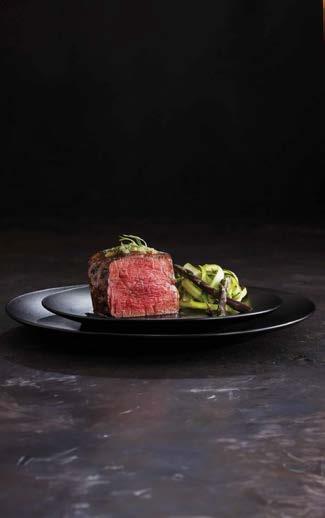
proudly served at
If you like steak as much as I do, check out our Chairman’s Reserve USDA Angus Choice Beef, which is sourced from independent farmers and ranchers, and selected using strict standards to ensure you’re getting the very best. Chairman’s Reserve USDA Angus Choice Beef is beautifully marbled, juicy and delicious. Marbling, or fat, doesn’t just add flavor; as it melts during cooking, it also makes your steak richer, juicier and more tender. Our in-store butchers hand-cut and hand-trim our Chairman’s Reserve USDA Angus Choice Beef steaks to guarantee the highest quality. With hand-cut, you get just the right thickness and just the right amount
“Our beef is sourced from independent farmers and ranchers for optimal marbling, for juiciness, tenderness, texture, and flavor. You can taste the difference from the first bite.”
- Donny Rouse, CEO, 3rd Generation
of exterior fat, which adds extra juiciness and flavor.
Our butchers also grind and make gourmet burgers in-house using 80% lean/20% fat ground chuck. That blend makes the juiciest, most flavorful burgers. I like the Rouses Bayou Boys Burger, which is loaded with jalapeños, cheddar cheese and bacon, and the Green Onion and Bacon Burger.
I also make grilled chicken wings, which take about 45 minutes to cook on a medium-high grill. I use a bottle of our Rouses Peach Hot Sauce and half a stick of butter, melting them down to create a delicious sauce for my wings. As soon as they come off the grill, I douse them with the sauce — I think it’s better than Buffalo sauce.

Barbecuing, often referred to as “barbequing” (see page 15), typically involves cooking meat at medium to high temperatures, usually between 225°F and 350°F. You can use direct or indirect heat from a grill, smoker or barbecue pit. Wood chips or chunks can be used to add smoky flavors, but the primary method involves cooking over a heat source.
Smoking takes barbecuing a step further. Smoking is a low and slow process. You are cooking for an extended period of time at a lower temperature, which allows the meat’s fat to render, effectively basting it from the inside. Smoking uses the smoke from the barbecue to cook the food, and helps you get the flavor and texture you’re after. Smoking can take anywhere from several hours to 10, 12, 16 or 18 hours



cap, which renders out as the meat cooks. I usually smoke brisket for a generous 15 to 18 hours to achieve a rich, smoky flavor.

Lastly, we felt incredibly honored recently when Jason Gonzales traveled from Luling to our corporate office in Schriever and treated our team to lunch (see page 21). Jason’s brisket was at least as good as mine (OK, maybe even a little better), and having Jason cook for us was a truly memorable experience. Barbecue lovers travel from all over to visit Gonzo’s Smokehouse & BBQ in Luling, Louisiana; it should definitely be on your barbecue bucket list.
Donny Rouse, CEO, 3rd Generation

participated, with team members from our corporate office and stores across Louisiana, Mississippi and Alabama, either playing golf or helping run the event. Funds from the golf tournament — $300,000 this year — support the Rouses Employee Disaster Relief Fund, our charity that assists our team members when they need it most.
Founded in 2016, our Employee Disaster Relief Fund has distributed more than $6,000,000 to team members affected by storms, floods, hurricanes and the pandemic.
Creative Director & Editor
Marcy Nathan
Art Director & Design
Eliza Schulze
Illustrator
Kacie Galtier
Marketing Coordinator
Harley Breaux
Copy Editor
Patti Stallard
Advertising & Marketing
ron bonacci
Tim Acosta
Amanda Kennedy
Stephanie Hopkins
Nancy Besson
Taryn Clement
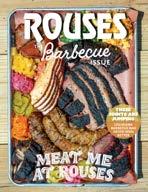
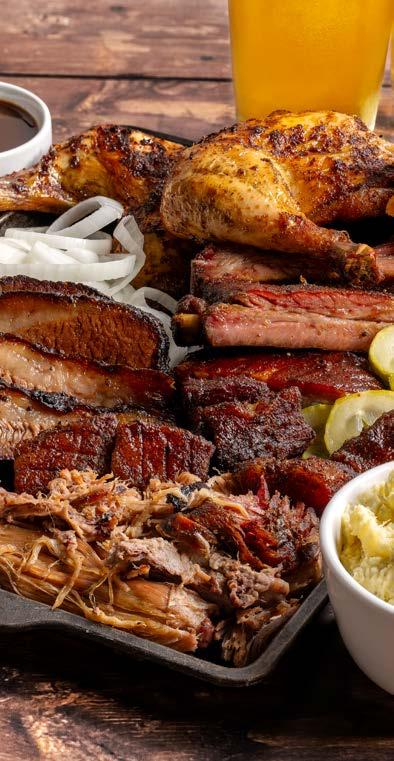
David W. Brown is a freelance writer whose work appears in The Atlantic, The New York Times, Scientific American and The New Yorker. His most recent book, The Mission: A True Story, a rollicking adventure about a motley band of explorers on a quest to find oceans on Europa, is in bookstores now. Brown lives in New Orleans.
Susan Langenhennig Granger is editor of Preservation in Print magazine and director of communications and marketing for the Preservation Resource Center in New Orleans. Prior to that she was a news editor, reporter and feature columnist for The Times-Picayune and NOLA.com.
Pableaux Johnson is a New Orleans-based photographer, journalist and author of three books on Louisiana food culture. He was named to the Epicurious “100 Greatest Home Cooks of All Time” list, and has been waiting for his grandmother to haunt him ever since.
Zella Palmer is an author, professor, filmmaker, curator, scholar, and the Chair and Director of the Dillard University Ray Charles Program in African-American Material Culture in New Orleans, Louisiana. Palmer’s latest publications, Recipes and Remembrances of Fair Dillard: 1869-2019 (University of Louisiana at Lafayette Press) and Ed Mitchell’s Barbeque (Harper Collins, June 2023), showcase some of her rich research. She also directed the documentary The Story of New Orleans Creole Cooking: The Black Hand in the Pot
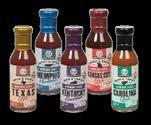




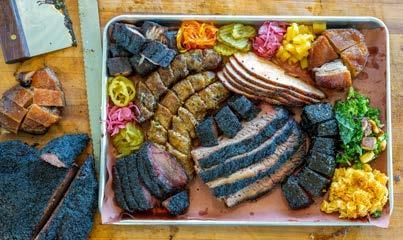




surprise.) And artist Sandi deMeo handpainted @MarcyMakesGroceries shoes for me. Sandi customizes several players’ cleats for


the Saints’ #mycausemycleats game every year, and my grocery shoes had me feeling like Taysom Hill. #mygrocerymyshoes.
I wrote a speech thanking the Rouse family, the company, and all the people who have been so instrumental to my career. But the night before the award, Stephanie Reid, president of The Shelby Report and an executive at WGA — and a friend and mentor — told me that WGA unfortunately didn’t have time for me to make my speech. I can be a touch verbose, so it occurred to me that someone might have warned Stephanie that once I started talking, I would never get off the stage. But she assured me it was just a jam-packed schedule, and I wouldn’t even have a microphone.
Honestly, I’d been more worried about remembering my Spanx than my speech.
Stephanie graciously introduced me at the ceremony, detailing my career milestones and the impact I’ve made in my field. It was very heartfelt. She also included some personal accomplishments that have shaped who I am today. When Stephanie finished, I strode onstage, took a photo, did my best beautyqueen wave, and walked off. I didn’t even say thank you.
Afterwards, Kacie, Amanda, Mary Ann and I walked the floor in our whimsical shopping cart crowns. We were greeted with warm smiles and applause. At one point, we joked that we had taken so many pictures, we might even find ourselves featured on the packaging for new products.
I shared snippets of my speech with everyone I met, so I got to tell my story after all.
I wasn’t the only one winning an award at the NGA. Rouses Markets was also honored as an Exceptional Independent by The Shelby Report during the ceremony. This marked our second consecutive win in as



many years, a testament to our dedication and excellence in the industry.
That night, we all went to dinner at the most fabulous restaurant in Vegas, Papi Steak, where Golden Era Hollywood swagger meets modernday Miami energy. The ambiance was electric, and the food was unforgettable. Afterward, we hit the dance floor, ready to keep the celebration going.
Now, there is no set closing time in Nevada for bars. But The Piano Bar at Harrah’s closed at 2am, and Harrah’s Carnaval Court closed at 3am – you should have seen our faces when they each announced last call! It was probably a good thing, though. The next morning, I was sure I was going to wake up to find a tiger in my bathroom — or worse, missing a tooth.



Then, the next weekend, my friends in New Orleans threw me a big party to celebrate. One of my best friends from Atlanta even flew in for the occasion. To my delight, they surprised me with a custom-made MarcyMakesGroceries cowboy hat, beautifully decorated by my friend Mollye, who rides in Muses and makes the best shoes, using images from our ads and magazine. Luckily, they must have ordered the hat a little big; after my Las Vegas adventure, and with my head all swelled from the excitement and accolades, I needed that extra room!
A huge thank you to Donny Rouse, Scott Miller, Tim Acosta, Lee Veillon, Amanda Kennedy, Kacie Galtier, Mary Ann Florey, Jason Martinolich, James Breuhl and Brian Bosworth for making the trip to Vegas with me. You are the best entourage ever. To Kristin Popp (president of the WGA), Heidi Huff, Stephanie Reid, Tess Hohman, Lesia Stahl, Shellie Wood and all the members of the WGA. And to Greg Ferrara, the President and CEO of the National Grocers Association.

Serves 8-10
The smoky, meaty flavor in these beans comes from the bacon. I take canned beans and heat them through in a sweet and tangy sauce, enriched with the flavors of onion, bell pepper, jalapeños, cilantro, green onions and garlic. I also like to incorporate some pulled pork, ground beef or skirt steak into my beans. Brisket works beautifully too.
WHAT YOU WILL NEED:
8 slices thick-cut bacon, cut crosswise into 1-inch pieces
1 large red onion, peeled and diced into ¼-inch pieces
1 red bell pepper, stemmed, seeded and diced into ¼-inch pieces
2 jalapeños, stemmed, seeded and diced
3 tablespoons minced garlic
1 can (15-ounce) black beans with can juice
1 can (15-ounce) cannellini beans with can juice
1 can (15-ounce) red kidney beans with can juice
1 can (15-ounce) lima beans with can juice
½ cup chopped fresh cilantro
½ cup chopped green onions
¹⁄₃ cup Rouses Carolina Style Barbecue Sauce
¼ cup Cajun Power Garlic Sauce
2 tablespoons dark brown sugar
2 tablespoons apple cider vinegar
2 cups pulled pork (about 1 pound) or 1 pound ground beef or skirt steak Kosher salt, to taste
Freshly ground black pepper
HOW TO PREP:
In a large cast-iron Dutch oven or heavy-bottomed pot, cook the bacon over medium-high heat until sizzling and crispy, about 3 minutes. Remove the bacon from the pot and set aside. Add the diced onion, bell pepper, jalapeños, garlic, cilantro and green onions to the pot. Cook, stirring occasionally, until lightly browned, for 3 to 4 minutes. Stir in the beans and their liquids, barbecue sauce, Cajun Power Garlic Sauce brown sugar, apple cider vinegar and pulled pork. Set up your smoker according to the manufacturer’s instructions and preheat to 275°F. Place cast iron pot on grill or smoker and smoke the smoke the beans, uncovered, for 1½ to 2 hours until thick, concentrated and richly flavored. Stir every 30 minutes
to prevent burning; if the beans start to dry out, add a little water and cover the pot tightly with aluminum foil.
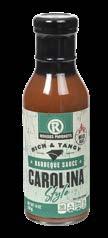
Adjust seasoning by adding salt, pepper or sugar to taste.
Barbecue Baked Beans can be stored in a sealed container in the refrigerator for at least 3 days.

ARROW-CIRCLE-RIGHT The original Cajun Power Garlic Sauce is what made Cajun Power famous. Chef Caro’s original recipe garlic sauce is not hot, but perfectly seasoned. Every 8-ounce bottle has two ounces of squeezed garlic in it. This original recipe is the foundation of every great Cajun Power product.

by Tim Acosta, Rouses Markets Advertising & Marketing Director
The area of the United States known as the “Barbecue Belt” features five distinct barbecue styles: Texas, Memphis, Carolina, Kansas City and Kentucky. At Rouses Markets, we have our own line of gourmet barbecue sauces named after and developed with flavors from each of these regions. I use the Carolina version in my baked beans.
Here on the Gulf Coast, we have a unique barbecue tradition that focuses not on beef, pork or chicken, but on shrimp, using butter instead of barbecue sauce. The “barbecue” refers to the rich and flavorful sauce the shrimp are cooked in; the spike of Worcestershire sauce in the recipe gives them a brown, “barbecued” appearance. We have several recipes for barbecue shrimp on our website, including a version based on the dish served at Pascal’s Manale in New Orleans; that’s where most people agree barbecued shrimp was invented. If you don’t like fooling with the shrimp heads and tails, I make an easy-to-peel barbecue shrimp; that recipe is also on our website.
And maybe it’s time that the Gulf Coast gets added to the
Barbecue Belt. Alabama is known for its distinctive white sauce. And Mississippi boasts more competition-winning pitmasters than any other state. At the 46th Memphis in May World Championship Barbecue Cooking Contest recently, teams from around the world gathered to compete for the title of Best Barbecue. The Shed BBQ & Blues Joint out of Ocean Springs, Mississippi, was named Grand Champion for their Whole Hog entry. This marks their third Grand Champion win at the event, standing out among 129 top competition teams.
My wife and I stop at The Shed every time we drive back and forth to the beach — I guess that makes us Shedheads.
When I order baby back ribs, smoked turkey or pulled pork at Big Mike’s BBQ Smokehouse in Thibodaux, the pit plate always includes a few slices of white bread, which I eagerly eat. White bread comes standard at most barbecue places, a barbecue tradition that likely goes back to the meat markets of the 19th century. The butchers would throw in white bread to sop up the sauce.
We sell Big Mike’s sauces in our stores, and I always get extra sauce at the restaurant. But when I barbecue at home, I don’t like to use barbecue sauce or anything like that. For my 3-2-1 ribs (see page…) I use our Rouses Honey in that last hour of cooking; the honey forms a glaze on top of the ribs. There’s no sauce, just glaze, so there’s nothing to sop up. So instead of white bread, I serve them with garlic bread.
Honestly, I prefer the taste of garlic bread with barbecue. And, clearly, I’m not alone. Texas toast, barbecue’s version of garlic bread, is
one of the most popular frozen food items we sell. Texas toast has its origins at the Pig Stand in Beaumont, Texas (no relation to the Pig Stand in Ville Platte, Louisiana; see page …). The owner of the chain wanted heartier bread slices, which didn’t fit in the toaster, so the cooks improvised by brushing thicks slices of bread with butter and grilling them.
Garlic bread with barbecue is a long-standing tradition here on the Gulf Coast — about as much as white bread is. At Rouses Markets, our garlic bread — made from our French bread — comes pre-wrapped in an aluminum package perfect for throwing on the grill. The garlic spread melts through the bread as it cooks, creating a crispy exterior with a buttery, garlicky inside. This gives it a fantastic crust while keeping the inside soft.
Garlic bread is one of the top five breads sold from our Bakery department during barbecue and grilling season. We also offer the same garlic spread on our garlic bread in tubs, so you can make your own garlic bread with ciabatta, artisan bread or our French bread. You can find the bread and the spread in both the Bakery and the Meat departments, right by our barbecue meats.


ARROW-CIRCLE-RIGHT If you can’t make it to Big Mike’s BBQ Smokehouse in Houma or Thibodaux for their prime brisket, pulled pork, smoked turkey and sausage, you can still enjoy the flavors at home. Mike Lewis’s barbecue sauces and sausages are available for purchase at Rouses Markets.

BRISKET TIPS:
ARROW-CIRCLE-RIGHT Wood Pairing: Hickory wood for robust flavor.
ARROW-CIRCLE-RIGHT Preparation: Use a well-marbled brisket, like our Chairman’s Reserve USDA Angus Choice Beef brisket. I like a bold flavored brisket. I do a very light coat of our spicy ground mustard mixed with a bit of Cajun Power Garlic Sauce, just to get the rub to stick to the meat. I make my own rub with kosher salt, our Butcher Blend Black Pepper, garlic powder, onion powder, and a tablespoon each of ground coffee and turbinado sugar. The sugar is not so much so it will burn; it just crisps to a nice brown crust.
ARROW-CIRCLE-RIGHT Cooking: Smoke at 225°F. I place the meat fat cap up for self-basting, but competitors may place it fat side down for appearance.
ARROW-CIRCLE-RIGHT Duration: Smoke for 14-16 hours, or until internal temperature reaches 195-205°F. I usually put it on the night before and let it smoke overnight. When the brisket is done, wrap it in foil; it will hold the heat for hours before you slice it. You can also hold it in a warming drawer.
ARROW-CIRCLE-RIGHT Short Ribs (Brisket on the Bone): Cook for 6-8 hours at 225°F, targeting a 205°F internal temperature. Let rest before serving.

PORK SHOULDER TIPS:
ARROW-CIRCLE-RIGHT Wood Pairing: Apple or pecan wood.
ARROW-CIRCLE-RIGHT Rub: Use a blend of paprika, brown sugar and spices.
ARROW-CIRCLE-RIGHT Cooking: Smoke at 250°F with hickory or apple wood for 8-10 hours, or until internal temperature hits 195°F. Once I hit 160°F, I wrap the pork shoulder in foil, put it back on my smoker, and let it go until it hits 195°F. Some people get nervous when they reach about 160-165°F and it stays at that temperature a few hours; that’s what’s called a “stall.” But once it gets beyond that, the temperature will continue rising.
ARROW-CIRCLE-RIGHT Moisture: Place a pan of apple juice mixed with a bit of apple cider vinegar beneath the pork. I also like to add some cut-up yellow onions and a cut-up head of garlic to enhance the flavor.
ARROW-CIRCLE-RIGHT Preparation: Cut along the entire length of the chicken, tail to neck, on both the left and right sides of the chicken’s backbone. (Kitchen scissors work great for this.) Pull the backbone out. Press down on both halves until you hear a crack.
ARROW-CIRCLE-RIGHT Seasoning: Use your favorite rub. Lately I’ve been using We Dat’s Creole Seasoning. I also like to use We Dat’s Garlic Parmesan Seasoning on wings.
ARROW-CIRCLE-RIGHT Cooking: Smoke at 350°F for about 2 hours, or until internal temperature reaches 160°F. Crank up the heat at the end for a nice crispy skin.
ARROW-CIRCLE-RIGHT Wood Pairing: Pecan wood for a sweet, nutty flavor.
ARROW-CIRCLE-RIGHT Wood Pairing: Cherry wood.
ARROW-CIRCLE-RIGHT Preparation: I like the semi-boneless or boneless leg of lamb we sell at Rouses.
ARROW-CIRCLE-RIGHT Marinade: Olive oil, garlic, rosemary, lemon juice, salt and pepper, and any herbs from the garden. Marinate for at least 4-6 hours, or up to overnight.
ARROW-CIRCLE-RIGHT Cooking: Preheat grill to high. Sear all sides, then reduce heat to medium-low and cook until meat reaches desired degree of doneness. Use a meat thermometer: 145°F for medium-rare, 160°F for medium, 170°F for welldone.
ARROW-CIRCLE-RIGHT Resting: Let rest for 10 minutes before slicing.
ARROW-CIRCLE-RIGHT Serving: Slice it thin and serve it with tzatziki sauce like they do in Greece. Tzatziki is a creamy dip that’s made of strained yogurt, shredded cucumber, olive oil, garlic, lemon juice, salt and herbs — usually mint and dill.
FOR RIBS:
ARROW-CIRCLE-RIGHT Method: Use the 3-2-1 method (details on page 50).
Photo by Romney Caruso

"best quality, best price"

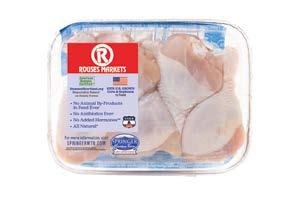



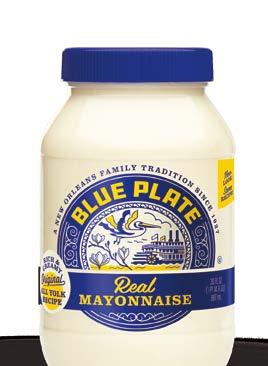
THAT’s THE

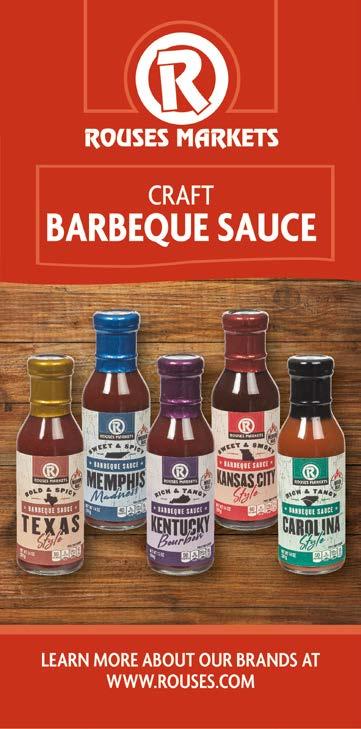

By Ali Rouse Royster, 3rd Generation
I love summertime, especially the slower pace it brings for my very active 7-, 8- and 9-year-old children. One thing I do not love about summertime is having to figure out not just breakfast and dinner every day, but also lunch for all five of us. If you’re anything like me and my husband, Billy, the question of “What’s for dinner?” is usually met with an eye roll and a sigh. Luckily for me, every now and again Billy will see some kind of recipe on YouTube or Instagram and just have to try it. And you can bet it’s going to be BBQ about 90% of the time (100% of the time in summer!). Sometimes we’re going on a culinary adventure that only the adults will try; other times it’s a slightly different take or method on an old classic; a lot of the time, it’s somewhere in the middle. Sometimes we have a hit on our hands that we’ll add to our regular rotation; many times the result is good but not good enough to make again; sometimes we just have a big ol’ flop….
Summer 2024 is shaping up to be full of such exciting BBQ experiments. So far, Billy has made ribs with a method that promised to be “better than 3-2-1” but unfortunately did not live up to the hype — we will stay true to Uncle Tim’s method over here! Billy also woke me up one Saturday morning with an ingredient list he’d scribbled down, telling me he was headed to Rouses — then for lunch we had our very first Flying Dutchman burgers (think: smashburger with special sauce on grilled onion slices instead of buns), which was very good but very messy. Billy made fun of me using a knife and fork to eat the burger, but I am fairly certain he wished he had followed suit with the mess he made trying to free-hand his!


















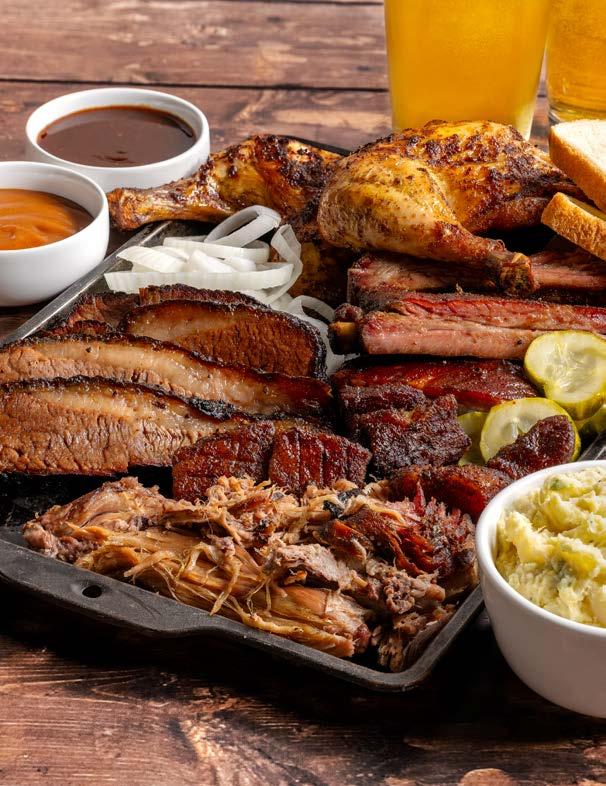
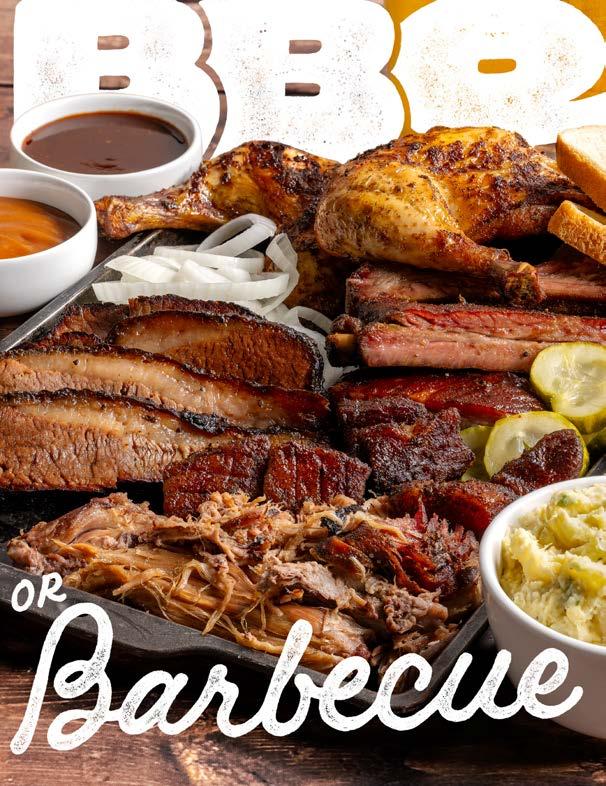
By Susan Langenhennig Granger
Topics up for debate: smoke or gas; charcoal or wood; pork or beef; rub or sauce; C or Q? Hyphens? Wait, hyphens?
Barbecue — or is it barbeque, or BBQ, or Bar-B-Q, or just Que? — has few, if any, agreed-upon standards. Used as a verb, it refers to the process of cooking over fire or smoke. As a noun, it refers to the output from that cooking: slow-and-low cooked meat. If you add an “ed” to the noun, it can be an adjective. And the spelling seems to be up for plenty of creative interpretation.
Barbecue with a C is preferred, according to pretty much any dictionary you pick up, as well as the Associated Press Stylebook, the guide that calls all balls and strikes on colloquialisms in the journalism world.
But the team that spells it with a Q is far from an outlier. The Alabama Barbecue Hall of Fame (and, yes, you should try every restaurant in it) includes restaurants about evenly divided on the spelling front. Many honorees, including Dick Russell’s Famous Bar-B-Q in Mobile, Alabama, lean heavily toward the BBQ and Bar-B-Q variations. The Shed, the self-described “BBQ & Blues Joint” in Ocean Springs, Mississippi, is also on team Q.
Hogs for the Cause, the food and music fest that raised $4.3 million for pediatric brain cancer in April, swings between “barbecue” and “BBQ” throughout its website. (An aside: There’s just something about cooking over smoke that inspires groan-worthy puns. Take, for example, these Hogs for the Cause barbecue team names: Smokey and the Bacon, Pass a Good Swine, 2nd Hand Smokers, Swinel Richie; Silence of Da Hams; and FamousOnInstaHAM.)
So, how did a method of cooking — described in a 2023 New York Times headline as a “singular cuisine” — beget such a plurality of spellings and usages? To find out, you have to go way back to the beginning — which, according to the Oxford English Dictionary and other sources, was in the late 17th century.
“The local Arawakan Indians [of Hispaniola] had a method of erecting a frame of wooden sticks over a fire in order to dry meat. In their language, Taino, they called it a barbacòa, which Spanish explorers borrowed,” writes Michael Quinion on the authoritative website World Wide Words, which is dedicated to the noble cause of “Investigating the English Language across the globe.”
The Oxford English Dictionary cites the 1697 writings of William Dampier, amiably described as a “buccaneer and explorer,” as the “earliest evidence for barbecue” in English.
Quinion attributes the first verb usage to “a work by Aphra Behn of 1690: ‘Let’s barbicu this fat rogue,’ showing that it was known well enough by then to be used figuratively.”
So, what about barbeque rather than barbecue? Several sources point to the French. “Many people believe that barbeque actually derives from the French barbe à queue, that is, ‘from beard to tail,’ signifying the whole of the pig being roasted,” Quinion writes. “Leaving aside the question that pigs don’t have beards (though the allusion would work for goats), the true origin is well authenticated, and the story is just another example of folk etymology.”
The Oxford English Dictionary, too, throws shade on the French origins of “barbeque.” “Barbe a queue ‘beard to tail’ is an absurd conjecture suggested merely by the sound of the word,” it declares.
And, if you didn’t think these variations were enough, the Oxford English Dictionary also lists borbecu, barbicue and babracot as (obsolete) spellings.
Whatever way it was originally written, the term barbecue, by the mid-19th century, was appearing with some frequency in New Orleans area newspapers. The Daily Picayune, for example, reported on July 1, 1837 about a feast that sounds like a 19th-century Hogs for the Cause: “Not less than 20 sheep, 25 calves, 30 shoats, 60 bacon hams and several heifers… were consumed by the assembled multitude, at the barbecue lately given. (A shoat, according to Merriam-Webster, is a young hog.)
In modern times, at least, the spelling variations do not seem bound by geographic borders. You’re equally likely to find a BBQ as a barbecue or a barbeque in Louisiana, Mississippi, Alabama, Texas, Kansas, Tennessee or the Carolinas. Even in London, there’s a chain of restaurants called “Big Easy Bar.B.Q & Crabshack,” which curiously claims to feature “traditional Louisiana BBQ and fresh lobster
Liz Williams, food writer, historian and founder, president and CEO of the National Food & Beverage Foundation and the Southern Food & Beverage Museum in New Orleans, believes the spellings are less about regional variation and more likely signals of a seriousness for the pitmaster’s skills. “I know there are some pitmasters and others who are offended by barbeque or BBQ, as they really feel that it is belittling or that it makes it seem less important or serious (than spelling it with a C).”
The Southern Food & Beverage Museum doesn’t have a barbecue section per se. Instead, it offers a Trail of Smoke and Fire, which discusses the regional differences in how people cook over fire. That encompasses much more than just barbecue, Williams said. “In some places like Florida, there isn’t a serious barbecue tradition, but they do smoke fish, so we included that,” she said. (Just for the record, Williams uses the C spelling of the word, as does the museum. “But I’m not making a statement about it,” she said. “Whenever I write it for a publication, I’m going to spelling it with a C because an editor is going to change it to that.”
As for BBQ, Williams thinks there’s a logical reason why the threeletter variation is popular. “If you have to buy a sign, and you have to pay by the letter, BBQ is just cheaper,” she said.

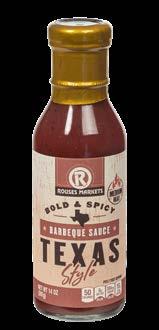
By Pableaux Johnson
When it comes to traditional foods (and especially barbecue), I can’t help but admire the purists.
Itip my hat to folks who become enamored with the transcendent flavor of their favorite ’que, then are driven to perfect it as part of their home repertoire. As students of the craft, they’ll travel the country to sample the legendary pits.
Purists take their excitement for barbecue and funnel it into long smoke sessions and copious note-taking. They’ll spend whole holiday weekends tending their backyard cookers with patience and precision. They fixate on the finer points of the seemingly simple craft (rub recipes, meat trimming, pit physics) and spend countless hours tending their meats, controlling every variable in the process.
As a barbecue lover, I respect a purist’s dedication, and it’s a joy to gorge on the tasty fruits of their obsessive labor. As a cook, I like their ambition and determination. But
as a practitioner of the barbecue arts, I’m more of a realist.
When I cook pork shoulders, I don’t obsessively check my meat temperature or fiddle with airflow during a nine-hour smoking session. Instead, I lean pretty heavily on something called the Texas Crutch.
And my life is much better for it.
The Texas Crutch is a smoking technique that involves wrapping a partially smoked cut of meat (usually a brisket, pork shoulder or other roast-like hunk) in thick aluminum foil to concentrate heat, accelerate cooking and minimize evaporation. Add a little liquid to the mix (beer always works) and let it sit for a spell.
In basic kitchen terms, the simple crutch technique turns a dry-cooking method (smoking) into a wet-cooking method (essentially, a braise). It’s also a great way to turn an economical cut of pig (the notoriously tough pork shoulder) into fall-apart shreds of delicious piggy barbecue.
The “wrap and rest” technique was developed on the national barbecue competition circuit, where control of internal temperature and meat moisture is critical.
Competition pitmasters assess the “doneness” (and the final texture) of
barbecue by tracking its internal temperature. For big cuts of meat (brisket, shoulders), there’s a “plateau” in the process — where cooking seems to stop as the heat penetrates deep into the center of the meat.
Over time, slow heat gradually transforms the connective tissue and muscle of the traditionally tough meat into silky, flavorful collagen — the rich “X factor” of your favorite stews and gravies.
The Texas Crutch was developed as a way for competition teams to hasten past the plateau, giving the cooks more control over the cooking clock. But it was also considered kind of a cheat by the purists — there they go again — since it varied from the straight-up meat+smoke=barbecue equation.
But in the real world (or at last my part of it) “crutching” works amazingly well for cooking my favorite big chunks o’ meat. And what’s more, it makes for some of the Best Breakfasts of All Time.
When it comes to slow-smoked meats, I’ve embraced the concept of barbecue being an indoor/outdoor sport. (Purists, you may want to skip this section, or risk bruising your delicate sensibilities.)
They gone? Great.
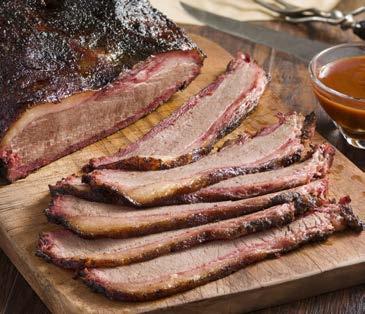

Let me tell you a story…
It all started a few years ago, when I decided to spend a Sunday smoking a pork shoulder for supper. It being a spring weekend, I rose with my alarm, full of ambition and big plans — only to find that it was an hour later than I thought (daylight saving time strikes again).
For some reason, my brain had a hard time getting on track, and my plans for an early breakfast, run to Rouses Market and “light the fire by 8am” slipped by one hour, then two, then three. I stumbled through my Sunday — disoriented in time and undercaffeinated — and finally struck a match in the early afternoon. I got my little Weber Bullet smoker stoked and loaded (with a 6-pound pork shoulder and two chickens) at about 2pm. Some friends were coming over to eat at about 8pm.
(So, we’ll pause here to say that any experienced barbecue person will recognize that four-five hours is plenty of time to smoke mid-sized poultry, but nowhere near enough time to fully cook a decent-sized pork shoulder.)
The afternoon wore on, and I kept a watchful eye on my double-level cooker — checking the meat temperatures occasionally, adding more wood chunks when needed, resisting the urge to open the smoker’s dome every 20 minutes or so. At about 6:30, my
neighbors likely heard me yell a series of aggressive encouragements to the nowherenear-done pork shoulder, along the lines of “C’mon. C’MON. COME ON, PIG!”
(In other news: My block has a very high tolerance for “neighbor crazy.”)
After five hours on the smoker, the chickens looked beyond perfect. They’d been on the grate below the shoulder, so they were consistently slow-basted with spicy pork fat. They couldn’t have been more savory/ beautiful.
The pork, on the other hand, seemed barely done. The exterior of the shoulder had a great color, with a burnished brownto-burgundy crust from a spicy rub and outside-in smoke massage. But the thermometer reading let me know that the core of the roast wasn’t nearly ready. Try to serve this at dinnertime, and my more polite guests could well damage their dental work on thoroughly underdone “not nearly close to barbecue.”
Disappointed but glad to have some pig-flavored smoked poultry to serve, I replaced the smoker dome and went to my guests.
A few hours and bottles of wine later, my guests headed home and I grabbed a flashlight to check the shoulder. Not much progress temperature-wise, and the fire was just about dead and burning down to faint
embers.
Disappointed and burnt out from the day, I remembered the crutch and decided to give it a try. The smoker was out of the question — no way was I going to stoke another fire pretty close to midnight — but my kitchen oven seemed like a better bet.
The prep took about three minutes in total: Wrap the shoulder in heavy-duty “tin foil,” add a second layer for insurance and add a little beer for the braising liquid. Place in glass baking dish, set oven on WARM (about 180-200ºF), go to bed and hope for the best.
The next morning, I woke up to the most magical smell. It was the faint aroma of pork and pepper, like I had fallen asleep in a heavenly smokehouse.
I opened up the foil packet, and the shoulder looked the same as the night before — beautiful color, decent smoke ring — but the texture was just…perfect.
The solid chunk of shoulder — hard as a clenched fist the night before — had transformed into a tender pouch of pre-pulled pork, barely holding together. All the rubbery tendons were gone, along with most of the muscle fat, which melted down during the night.
From a non-purist’s perspective, it was darned near perfect — after a night in a low oven, the pork practically fell apart under its own weight. Tender, delicious and low-maintenance.
While it may not have the street cred of a pig lovingly tended by a dedicated roundthe-clock purist, it’s a delicious compromise that works every time.
These days, I confidently start my shoulder after lunch, knowing that the overnight crutch will give me one of the best morning trifectas ever — a perfect pulled pork omelette, strong coffee and a good night’s sleep.

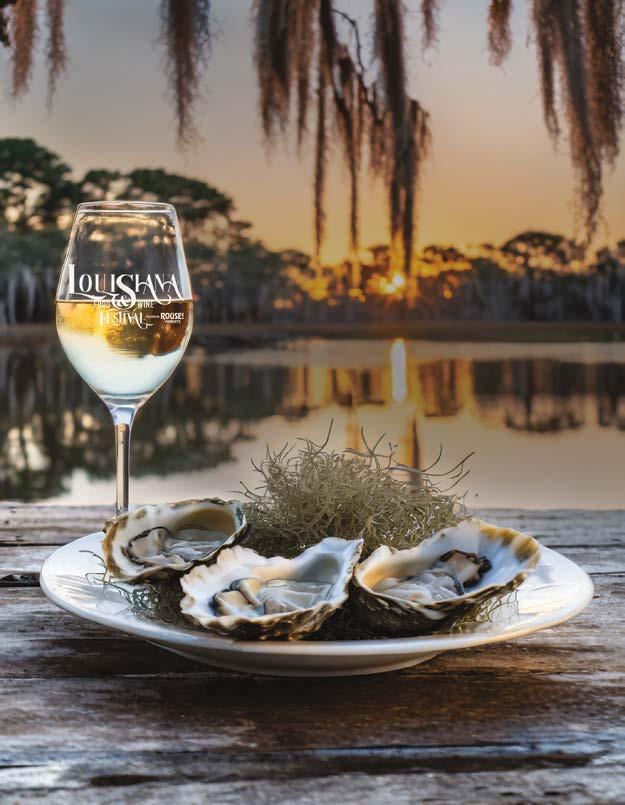

ARROW-CIRCLE-RIGHT Before he was a barbecue tycoon, Matt Pittman was a technology guy in the finance world. For him, barbecue was a hobby, albeit a hobby for which he had deep passion. He got his big break in 2014 when he appeared on the show BBQ Pitmasters. It was an episode in which Texas pitmasters competed against one another, and Pittman came in dead last.
Before the show aired, however, he had started a website that sold rubs and accessories, and had opened a little storefront in Waxahachie, Texas, to sell supplies. He was determined to make a go of it in barbecue. With a name like Pittman, how could he go wrong? He was taught to cook as a child by his grandmother, June. He found the barbecue “religion” years later, after a life-changing trip to Central Texas. (It was a plate of brisket — the “king of Texas barbecue” — that changed everything.) His TV appearance gave his side hustle, which he called Meat Church, a big boost. Hard work took him the rest of the way.
Today, Pittman’s barbecue empire spans a YouTube channel with almost a million subscribers, and an Instagram account with just as many followers. His barbecue seasonings and rubs are bestsellers everywhere they are sold, including at your local Rouses Market. He teaches private classes and attracts students from around the world, and he participates in major cooking events across the country. He’s even been on the The Tonight Show Meat Church is among the most successful brands in barbecue — and Pittman is just getting started.
His fans even call themselves “the Congregation,” and among the most popular items at his store are hats with stained glass “windows” on them and rubs with religious-inspired named. Part of the success of Meat Church is that Texas-style barbecue can be an hours-long, and sometimes days-long, process. You commit to that kind of work, and you want to know that it’s possible. Smoking a pork butt, for example, involves a lot more than slapping meat
on a hot grill. Trimming it, seasoning it, misting it, wrapping it — it’s a lot, and anyone who has gone through all the effort of smoking one just to have it turn out too salty, or not salty enough, knows what a disappointing experience it can be.
Pittman’s videos, though, make you feel almost like there’s a pitmaster with you in the backyard. He offers his guidance with an easy Texas charm and, using his online classes, not only do you get more from your smoker, but you also start to understand why people become so obsessed with barbecue. His rubs and sauces — things like The Gospel BBQ Rub, Holy Cow and Bird Baptism Brine — are well-regarded by professionals and amateurs alike for using fresh ingredients without fillers.
Confident in the flavors you’ll get, you can focus on the challenge of getting the meats just right.
Pittman is proof that you can have a second act in life. When he got his big break, he had been working in the corporate grind for 21 years. He made Meat Church his full-time job at age 43. Today, in addition to his own products, he is a brand ambassador for YETI and Traeger Pellet Grills.
If you go to Waxahachie, however, one thing you won’t find is a Meat Church restaurant. As he told PaperCity magazine, when asked when he might open a barbecue joint, “Why would I want to do that? I’ll see you on my boat instead.”
You’ll just have to do the cooking yourself — but the good news is he will show you how.
– David W. Brown






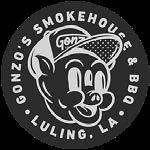
By David W. Brown, photos by Romney Caruso
Jason Gonzalez uses a shovel to rake the shimmering coals of his offset smoker. We are at the picnic area just outside the Rouses Corporate Headquarters in Schriever, about 12 miles from Houma. Cloudless blue skies and an easy breeze make this the perfect day for a barbecue, and Rouses found just the pitmaster for the job: the man behind Gonzo’s Smokehouse & BBQ in Luling. He has prepared for us the most popular dishes he serves, and the smoky smell of seasoned meats has a dozen of us inching involuntarily closer around him.
While tending the pit, Gonzalez talks proudly about his barbecue shop, five minutes from the Luling Bridge heading toward New Orleans. Gonzo’s is a smokehouse that needs no introduction. Word of mouth is so strong that people gladly wait hours for a table and, on Fridays, Gonzalez keeps an ice chest full of free beer and free water for his loyal — and sometimes a little obsessed — customers. No one would argue that it’s some of the best barbecue in the New Orleans area. Customers drive in from Houston and farther, suggesting that it is probably among the best barbecue joints in the country. For that kind of quality barbecue, you have to come early, but the beer and anticipation give the shop a festival vibe.
Gonzalez gestures at the smoker: “The one we have at the shop is a 500-gallon way bigger than this one,” he says, and leans his shovel against it once the coals are just right. “Before we had a shop, I had a smoker in my front
yard for a short time, but people were giving me the eye. It’s 20 feet long.”
Gonzalez is a young 46, fit and draped in the modern chef aesthetic: tattoo sleeves, a black T-shirt emblazoned with the single word brisket, a cap turned backwards and Vans on his feet. The “small” smoker is this great beast of a thing, with faded green paint and rusted iron accents so perfect as to appear painted on, and with whitewalled tires and red rims. It looks like photos I’ve seen of the City Produce truck that J.P. Rouse used to haul around vegetables a hundred years ago.
On the platter featured on the cover of this issue, you can see what Gonzalez had in store for us. In addition to his famous brisket, he prepared pork belly burnt ends, smoked turkey breast, beef cheeks, a brisket boudin (made from the smoked-down trimmings of the beef cheeks and his grandmother’s dirty rice), cherry cola brisket burnt ends, pork jowl cracklins topped with Mike’s Hot Honey, which — and you’ll have to trust me on
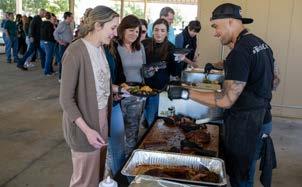
this — was something like a barbecue crème brûlée, savory and decadent and alone worth the trip to Luling. (On the Gonzo’s menu it’s called Hot Honey Jowl Cracklin, and as he described it: “It’s super rich, it’s super fatty,” he said, “but it’s got that crunch on the outside with the honey.”)
Lunchtime can’t come soon enough.
Across the picnic area, Gonzalez’s aunt, sister and father are prepping the service area with stacks of plates and an array of foil containers holding sides and smoked meats, wrapped and awaiting the hungry Rouses team. Gonzalez, a native of the West Bank, talks about life in the barbecue business. Though he has been approached regularly about opening a second location of Gonzo’s in the city of New Orleans, he isn’t interested. “I’m keeping it small,” he said. “One store is enough.”
Before he was a pitmaster, Gonzalez had an office job. He grew up in Waggaman, Louisiana, and had been a draftsman his whole life, working at different engineering firms. In 2014, he bought a little box smoker from Academyand and, as a hobby, started smoking things in the backyard. Right away, he knew he had a knack for it and took the task seriously. He started off with books and videos on YouTube, trying to figure out the magic of smoking meats. Franklin Barbecue — a celebrated Austin, Texas barbecue joint under pitmaster Aaron Franklin, who won the James Beard Award for Best Chef and was inducted into the American Royal Barbecue Hall of Fame in 2020 — had posted some videos at the time demonstrating how to smoke a brisket, how to smoke a pork
butt, and how to smoke ribs. Gonzalez did his best to follow their instructions and, after finishing, went back to see if he had missed something.
It improved his level of ability, but he wasn’t really comfortable with cooking briskets, which is serious business, involving smoking 12, sometimes 14 hours — and that’s just the cooking. There are still countless hours of preparation beforehand, plus trimming and seasoning it. Depending when you start, it can be an all-night job.
Gonzalez was working at Shell at the time in New Orleans, and had been for about six years. Before long, he started catering on the side for plants in St. Charles Parish.
“I used to work out with some of those guys that worked at the plants,” he said. “They knew I was just doing this in the backyard, but they’d say, ‘Hey man, can you cater for my office?’ That got my foot in the door before I even did pop-ups or did any of the big festivals in New Orleans. People would just put in an order to do a big ol’ pan of brisket and sides, and I’d deliver it to the plant.”
Standing next to the pit outside Rouses, it’s hard to imagine Gonzalez was ever anything other than a seasoned pro, let alone an apprentice with a day job. Like many, if not most, who finally decide to pursue their dreams, it took employment issues to really spur Gonzalez into action. In 2015, the price of oil destabilized and the oil industry generally had a bad year — which meant oil workers had a bad year, too.
“Shell ended up pretty much laying off the whole office,” he said. “They consolidated to a few people and moved everybody to Houston, and then they laid off all drafting and design and engineering people, subcontracting all that work out instead.”
That is when he started to really focus on his barbecue and see if he could actually take it to the next level. He took his severance check from Shell and bought a good-quality pellet smoker, which allowed greater control over the fire and would allow him to better dial in his recipes. He also took one-on-one classes from Dylan Taylor, a well-known pitmaster in Texas. “We did brisket, ribs and sausage,” Gonzalez said.
“I didn’t really understand how important it is to trim the brisket properly to get a
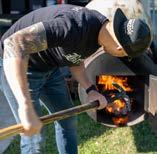


“Jason
does such a good job. He’s young, he’s aggressive. And every day there are people lined up at his restaurant. They give beer to people because the lines get so long! And we love that. We’re not only about Rouses. We’re about community. And we love seeing members of our community succeed.”
— Donald Rouse
really good end product. Watching Dylan trim a brisket properly really just changed everything — making them all the same size, giving them that nice, even fat cap on top. After taking that class, I went back home and it was on. Between that class and the new smoker, the game changed for me.”
He started to think he could make a career out of barbecue. “When I got laid off from Shell, it kind of opened my eyes,” he told me. “I thought I was going to retire there. Once that happened, it was kind of like, alright, we’ve just got to look out for each other.” Before jumping into the barbecue business, however, he found a job at another firm and, for the next several years, continued doing drafting and design during the week. On his days off, he kept his barbecue side business going, building a big customer base in the process, which grew and grew from word of mouth.
In 2020, right before the lockdowns, he finally bought the space of today’s Gonzo’s Smokehouse. It was, and remains, a familyrun shop. They didn’t plan to open to the public for dining. Originally Gonzo’s was all to-go and more a place for him to prep meats, make the family’s own boudin, and smoke things for catering, but the demand got too great. “We did that probably about six or eight months. Then we eventually opened up to the public and started serving them,” he said.
It was always going to be a family business. His late grandmother, Mabel, was a major inspiration for Gonzalez; he’s even named one of his smokers in her honor. “I remember sitting in her kitchen cooking with her. She was a really, really great cook, and she’s where I got a passion for cooking. I wish she were here to see where I am now.”
Most pivotal during his slow maturity in the barbecue world was a trip to Austin, where Gonzalez had a series of “real eye-opening experiences,” he said. He went to Franklin Barbecue, whose videos he had spent so much time studying. He waited in line for six hours to get barbecue. “It blew my mind,” he said. “From the start, I was like, oh man, we don’t have anything remotely close to this.” He said it expanded his ideas of what barbecue could be.
At other places he later visited, however, he learned another lesson: that just packing a smoky, exquisite flavor profile on a


well-trimmed piece of meat did not always make great barbecue — even at some wellregarded barbecue places.
“You can almost taste the love that people put in their food,” he explained. “When I go to Texas, you can sometimes get the sense that, all right, this is good — but it’s not the person who actually started the business. You can tell they’re not there slicing, they’re not there preparing the food. You can taste it when love is missing from the food.”
Technical work and artistic aspirations matter because, in Texas-style barbecue, you can’t rescue a failed dish by simply dousing the meat in a little extra sauce. The sort of barbecue Gonzo’s offers is essentially made with just salt, pepper and garlic. Gonzalez and his father make the sausage and boudin they serve from scratch. The dirty rice in the boudin is made using his grandmother’s

recipe. His sister comes up with all the desserts. The rest is all Gonzalez’s.
He built his business slowly. He cooked for plants. He eventually got comfortable with cooking for the public at pop-ups at places like the breweries in New Orleans. Eventually, he was at the big festivals in the city. The response to the smokehouse in Luling has been humbling and fantastic.
“We’re not doing this for cash, right?” he explained. “We just want to put out good food. When you come to Gonzo’s, you’re going to see us. You’re going to see my family there. I’m slicing. My sister’s doing dessert. My dad’s at the door. I just want to keep putting out a good-quality product every week and also just [keep] coming up with new ideas, new cuts, new menus.”
Just before noon, a line formed of more than a hundred hungry Rouses workers. One
by one they filed through the serving area, and Gonzalez piled meats on their plates, his hands moving first like a surgeon, then like a pianist: slicing and piling, slicing and piling. He carved the turkey breast thinly using a bread knife, expertly, and then the sausage. (“I was buying these big fancy straight-edge knives that are like $150,” he said. “But the guys in Austin were using these $20 bread knives. I tried them and they’re so much better than the expensive ones!”)
The thick wooden carving board from which he worked gleamed with fats and oils. The long line didn’t faze him — it was just another day in the office for the pitmaster. His father and sister and aunt ladled sides and offered dessert — things like mac and cheese and strawberry shortcake. When Donald and Donny Rouse reached the front of the line, Gonzalez served them.

“That’s amazing,” said Donald. “Can’t wait to try it,” said Donny.
The picnic tables filled, and the Rouses team talked excitedly between bites about the usual topics: ports and work and kids and summer. Donald and Donny sat across from each other, next to Lee Veillon, the vice president of human resources for Rouses Markets. The topic of conversation turned to barbecue, and their own memories growing up.
“My grandpa, Emile, had a homemade smoker,” said Veillon. “It was a big metal thing. It wasn’t an offset like this one,” he added, and pointed at the smoker brought from Gonzo’s.
“During the summer we would spend a lot of time at my grandparents’ house in Morgan City. My cousins and I would always go there. They lived near Lake Palourde, so we would get to go fishing there — for bass, catfish, perch. We didn’t have a boat or anything, so we were just fishing off the land. We grilled hamburgers, lots of chicken. Turkey too. My grandfather used to smoke a turkey that would take 24 hours — he’d have to get up in the middle of the night. It was all Cajun cooking.”
Donald Rouse said, “My dad would barbecue. Now, Donny and I — we do it! But there were days long ago when dad would do the barbecue. He’d do brisket or steaks or whatever might be for a special
occasion. Certainly, he didn’t barbecue the way Gonzo does — but we thought it was good.”
Between bites, Veillon said, “My favorite thing today was the brisket boudin. Apparently, the dirty rice in it is his grandmother’s recipe.”
He and Donald turned and looked at the Rouses team, most of whom were eating desserts, or drinking Cokes and bottles of water. “We’re so proud of what our team has accomplished and it’s great to see some of them today enjoying themselves, and supporting a great local establishment in the community like Gonzo’s,” said Veillon. As for the dessert, he told me: “They said I’ve got to try it, and I said I’d just have a little bit. And then I ate the whole thing. Now I need to go find a hammock.”
Donald laughed at this. “Jason does such a good job,” he said. “He’s young, he’s aggressive. And every day there are people lined up at his restaurant. They give beer to people because the lines get so long! And we love that. We’re not only about Rouses. We’re about community. And we love seeing members of our community succeed.”
Success has come fast and hard for Gonzo’s Smokehouse. They don’t really advertise, aside from posting to their social media accounts. Their Instagram account, which consists mostly of images of meats they’ve cooked, alongside glimpses of Gonzalez’s family behind the scenes, has
already grown to more than 22,000 followers. “I try to help with the food photography,” he told me. “I’m getting better — things like lighting, I’m still trying to learn all that!”
Gonzo’s Smokehouse, located at 12325 River Road in Luling, is open for lunchtime on Thursdays, when they sell smashburgers — brisket trimmings that are ground in-house and seasoned, and smashed on a flattop grill with brisket tallow — and Fridays, for meat trays that include smoked brisket, pork belly burnt ends and brisket boudin, from 11:30am to 3pm, or until they sell out of food.
Those two days of service take an entire week to prepare — and you can taste the love that goes into it. Gonzalez does his ordering on Monday, trimming the meats when they arrive. He keeps at it on Tuesday, and begins hand-making the boudin as well. His father comes in on Wednesday, and they start smoking the boudin. On Thursday, Gonzalez gets in at 5am and begins cooking the brisket for Friday. Pork shoulders are on one pit, and on the others are brisket burnt ends, beef cheeks, oxtails, pork jowls and other cuts. He prides himself on changing up the menu, offering cuts of meat that no other shops around here are willing to do, with the extensive work required to prep and smoke. His sister and aunt come in on Thursday for lunch service and, while Gonzalez is seasoning meat, checking fires, and taking meat off and wrapping it, they’re making patties. His dad is on the grill smashing burgers. Then they’re all back at it again on Friday for an even longer lunch.
The work is relentless, and requires attention and artistry. That’s just the way Gonzalez likes it.
“There’s no plans to get any bigger,” he said. “I thought about maybe like hiring a bigger staff, adding more days. I went back and forth, struggled with it. But I’m keeping it small. I’m keeping the love in what we do, and I’m keeping it in the family.”
By Poppy Tooker
Genghis Khan and his marauding Mongols had an indelible influence on Asian food as they galloped across China in the early 1200s. The invaders are credited with introducing their conquered audience to spit-roasting over charcoal, a practice known commonly today as barbecue. Coal was lighter than wood and burned hotter and longer without need for heavy vessels, perfectly accommodating the Mongols’ nomadic lifestyle. The practice continues today, evolving to suit the taste of each culture affected.
From Korea to Thailand, to Vietnam and mainland China, some common denominators prevail. Unlike the steaks and whole chicken pieces that Americans barbecue, in this preparation thin slices of meat are strung on bamboo skewers before cooking. In Asia, nothing goes to waste. Chicken heads and feet (along with all parts found in between) are grilled on street carts and in open-air markets. Gizzards, livers, intestines — even the chicken’s esophagus — are in the offing, along with coagulated blood. Beef and pork are given the same nose-to-tail consideration. Invariably, a spiced vinegar sauce complements the finished product.
Although born and raised in New Orleans, Chef Anh Luu’s tastebuds were influenced from childhood by her Vietnamese mother, who emigrated to New Orleans seven years before Luu’s birth. When she began her culinary career in Portland, Oregon, Luu developed a style dubbed “Viet-Cajun,” combining traditional Vietnamese with the spicy, distinctive flavors of South Louisiana at Tapalaya, a popular restaurant in Portland.
Back in New Orleans since 2020, Luu continues to bring her Vietnamese heritage to the forefront. Frequently incorporating the flavors of lemongrass, garlic, chilis and fish sauce accented with a heavy dose of fresh lime juice, Luu crafts marinades for grilled pork and beef that are further accentuated by barbecue dipping sauces with the same flavor profile.
“I tend to have a very open mind with the term barbecue,” Luu laughed. “At my Xanh Nola pop-ups, I’ll borrow the taste of sour orange calamondin from the Philippines and experiment with bulgogi style Korean barbecue too. A bit of sugar in the marinade helps with the caramelization and adds to the smoked char flavor,” she stated.
Instead of thin meat slices, Luu sometimes incorporates garlic and ginger into freshly ground beef or pork patties before grilling. Her version of New Orleans’ local favorite BBQ shrimp features head-on Gulf shrimp marinated in a chili tamarind sauce and cooked over an open fire. All her grilled dishes are served with lots of fresh lettuce, mint, cilantro, cucumbers, green onions, and pickled carrots and radishes. “For me it’s all about the textures as well as the flavors,” Luu said, “the crunch, the chew, the fresh herbs all coming together with a sweet, salty, acid sauce.”
Bangkok native Chef Aom Srisuk and her husband, Frankie Weinberg, present authentic Thai style barbecue dishes uptown at their original New Orleans restaurant, Pomelo, and at Good Catch, their larger downtown eatery. Although neither location has a grill, Srisuk replicates the essence of the Thai experience by using the same marinades before roasting the meats. A favorite on the menu at both restaurants is her Som Tum platter, which mashes up a classic — Thai green papaya salad — with spicy salmon crudo, BBQ pork, shrimp and pork rinds.
At home, the pair delights in using their shabu-shabu grill. One of the few implements the chef brought to the U.S. when she emigrated, the specialty item allows them to “grill in broth.” The indented center of their tabletop charcoal grill holds simmering broth, while the grill’s hot edges provide


the surface for the initial cooking. Once grilled, the items go into the broth, adding to the flavor and the communal experience. Although much debated as to its ancient Mongolian vs. modern Japanese origins, Srisuk says, “Shabu-shabu is a popular family dinner activity in Thai homes, central to gathering people together.”
Despite the dizzying variety of grill and barbecue traditions across Asia, char sui is the version most Americans think of when it comes to Chinese barbecue. The words char sui are so well recognized, they appear on many new American fusion menus, along with other international dishes like “gnocchi,” “confit” and “schnitzel” — all dishes appropriated from other cultures. Char sui is so foundational in traditional Cantonese cuisine: It is an important ingredient in everything from egg rolls to fried rice, hot and sour soup and more.
Andrew Lu of Get Your Mom & Dim Sum laughs when asked about the char sui at the Chinese restaurant he grew up in, his uncle’s Lafayette, Louisiana based restaurant Royal Panda. “It was always just called BBQ pork on the menu,” he remembered. “I asked my dad about that, and he told me the translation was, in part, an attempt to assimilate. He and my uncle were bullied in school for being Asian, and BBQ pork seemed like a way to fit in. People now are more accepting of authenticity,” Lu said. “So, on my menu, it’s always char sui.”
No matter what it’s called, char sui is universally recognized by its bright red color, a byproduct of red yeast rice originally used




in Chinese marinades. The FDA banned red yeast rice in the U.S. due to its statin drug-like effects on humans. “Honestly, a lot of places just use red food coloring,” Lu said. He achieves the same effect by using goji berries in his marinade. Sometimes to add a depth of flavor, he reduces a Big Shot “red drink” soda as part of the marinade. “I also incorporate the traditional flavors of honey, Chinese five-spice and white pepper,” Lu said.
Carling Lee describes her family’s char sui as “sweet, salty and meaty.” But for more than 40 years it was called BBQ pork on the menu at her parent’s Royal China Restaurant. “It was easier for people to understand,” she explained. “Our process has always taken
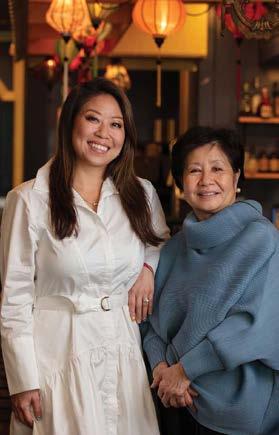
three days. We marinate our pork loins for 24 hours with ginger, garlic, soy sauce, sugar, honey and peppers. We had great, big smokers there,” she remembers. “The red color of our barbecue comes from 24 hours in the marinade before two full days in the smoker. We’d string many pork loins together on big, metal hooks. They always reminded me of Chinese firecrackers,” she laughed. “That red color is so important to Chinese people. It symbolizes good luck, abundance and prosperity.”
That BBQ pork caused a sensation in Royal China’s Metairie neighborhood. “We’ve always been known for our consistency.” Lee said. “We chopped off the ends for uniformity and people were crazy for them. When they smelled the smokers, our regular customers would know to get in line to buy those lightly charred pork tips.”

Lee’s parents, Tang and Shirley Lee, sold Royal China in 2021. Although she’s a practicing real estate attorney, Carling Lee admits she missed the restaurant so much, she encouraged her mother to come out of retirement, and Miss Shirley’s Chinese Restaurant opened on Magazine Street in uptown New Orleans in 2022.
Although the big smokers were left behind in Metairie, nothing has changed with Miss Shirley’s flawless BBQ pork and BBQ ribs. “I love char sui so much,” her daughter confessed, “I even eat it scrambled with eggs in the morning for breakfast!”

By Zella Palmer
During the pandemic, I was home gardening, writing and doing what I could — like everyone else — to keep my mind off everything that was happening in the world. To my surprise, my cousin Lisa, a lawyer in Atlanta, texted me: “I’m driving to New Orleans for a porch visit for my birthday.” I was thrilled! Finally, company (even though it was from a distance). Lisa is originally from Wilson, North Carolina, a small rural town an hour from Raleigh where my matriarchal family runs deep. Lisa has been the family historian for quite some time, finding archival articles, connecting lost relatives and lifting up the story of our mutual relative, my mother’s grandfather, Dr. Joseph Henry Ward, a Black surgeon during World War I, a Wilson native and the first African American director of a Veterans Administration hospital. I anxiously awaited her arrival.
That morning before Lisa arrived, I received an email from Mr. Ed Mitchell, the legendary Eastern North Carolina whole-hog barbecue pitmaster, requesting a meeting. I knew of Ed Mitchell from the many family trips we made to North Carolina and from his appearances on the Food Network’s Beat Bobby Flay and the late Anthony Bourdain’s A Cook’s Tour programs, but I had never officially met him. Extended family members in Wilson, North Carolina raved about Mr. Mitchell’s barbecue, so I was excited to tell Lisa about my
email from him. Once Lisa arrived at my home, I told her, “I forgot to tell you, Mr. Ed Mitchell’s team reached out to me requesting a meeting. They are interested in me telling his story.” Lisa’s eyes glistened and she said, “Answer that email now and tell them you have roots in Wilson!”
And so it began, the journey back to Wilson, where whole-hog barbecue is king. Of course, there are so many regional styles of barbecue that are beloved throughout the United States, from Texas brisket to Louisiana cochon de lait to Kansas City style ribs, but nothing could prepare me for
Ed Mitchell’s Eastern North Carolina whole-hog barbecue, “the last vestige of Southern barbecue,” according to barbecue historian Dr. Howard Conyers. Ed Mitchell was cooking the old-fashioned way, cooking hogs that were raised by small farmers with no frills, just generational skills; “fast and slow” was how he learned from men who were never recognized for their talent but were called to cook for every political rally or shindig since the inception of our country.
Mr. Mitchell, in his signature overalls and baseball cap, invited me to pull up a lawn chair and watch him, his
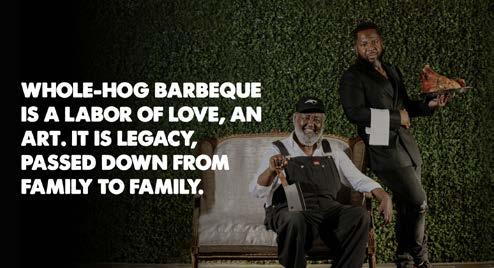
brothers, son and nephew direct the pit, a moment of art in motion, watching them pour generations of skills into the craft of barbecue. That first morsel, a symphony of crispy golden glistening pork bits with the juiciest, most flavorful barbecue I have ever tried, truly blew my mind. I savored every bite, realizing this is barbecue in its purest form. Sadly, Carolina barbecue has often been misunderstood due to the vinegar-based styles of barbecue sauces. The Carolinas have three styles of barbecue sauce: Eastern North Carolina, the most traditional barbecue sauce with vinegar and spices; Western North Carolina, a mix of light ketchup, vinegar and spices; and South Carolina, known for its mustard-based vinegar sauce.
Eastern North Carolina vinegar-based barbecue sauce is a true and original taste of history. Admittingly, I have puckered my lips to some vinegar-based barbecue sauces that overpowered the hog. I realized that the quality of the hog and balance of acid, spice and sweetness in making a traditional Eastern North Carolina vinegarbased barbecue sauce is key to experiencing the magic of whole-hog barbecue — and no one does it better than Ed Mitchell.
According to Ed Mitchell, mastering the craft of barbecue takes patience and skill; you must be committed and love the craft. Mitchell’s style of cooking whole-hog barbecue is generational, passed down from many of the men in Wilson, equipped with generations of oral wisdom on how to build a fire, bank the coals, taper the fire down and break the hog down until it becomes the most succulent piece of meat that can feed an entire community. Mitchell reflected on his style of cooking: “Most people are taught to cook whole-hog barbecue low and slow. My way is to start the coals at a high temperature and taper them down.” Of course, it took years of practice and error for Mitchell to master his style of barbecue, and many of his stories of trial and error were shared in his cookbook Ed Mitchell’s Barbeque (HarperCollins, 2024). Mitchell carries these stories and skills as a badge of honor, always paying homage to the legacy of unrecognized Black pitmasters who shared a swig of moonshine, tended the fire, and taught him life lessons in the wee hours of the night as the hog cooked in a pit nurtured with deep love for community.
Ed Mitchell shared so many memories of growing up in Wilson during the best and worst of times in Ed Mitchell’s Barbeque. One story that still warms my heart was when Mitchell was drafted to fight in the Vietnam War, and he longed for some good barbecue and his mother’s cooking. When he finally came home after serving in Da Nang, Vietnam, the entire community and his family prepared a feast, a “pig pickin’” where the cooked hog is set on a table and mopped with vinegar-based barbecue sauce, ready for the community to pick their favorite parts of the hog. Mitchell credits his mother Doretha Mitchell, now in her 90s, and the women of Wilson for preparing all of the beautiful side dishes and traditional vinegar-based sauce that accompany every pig pickin’ as well as whenever the spirit moves them to host a barbecue. Ms. Doretha taught Ed Mitchell how to make her famous sauce that continues to live in the memory of every Ed Mitchell fan.
Most Americans today identify barbecue sauce by its tangy molasses-ketchup flavor. However, before there were ketchup and mustard condiments, vinegar was used for preserving and seasoning meat proteins. According to barbecue historian Robert Moss, many magazines and cookbooks throughout the 19th century documented
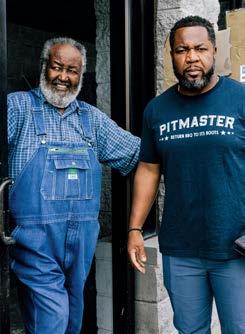
this vinegar-based barbecue sauce. In 1896, Harper’s Weekly published an article describing a Georgia barbecue sauce as “a compound of sweet country lard and the strongest vinegar, made thick and hot with red and black pepper.” By 1917, a Black preacher from Goldsboro, North Carolina named Adam Scott opened a barbecue restaurant, believing that his vinegar-based barbecue sauce came from a dream. Scott sold his commercial barbecue sauce to the public for decades, and it is still in production today.
The secret to Eastern North Carolina vinegar-based barbecue sauce is the perfect balance of acidity and spice. The same ingredients in the sauce are used to baste the hog at the final hour of cooking: apple cider vinegar, brown sugar, salt, black pepper and red pepper flakes. The sauce is used only to brighten a perfect piece of meat just before serving, never drowning the meat in sauce; it is the perfect complement to hours of overnight labor. Also, the quality of meat is integral to traditional Eastern North Carolina whole-hog barbecue.
In 2022, Ed Mitchell was inducted into the Black BBQ Hall of Fame and the National Barbecue Hall of Fame. Mitchell’s remarkable story will be forever memorialized in his cookbook, Ed Mitchell’s Barbeque, that not only shares his secrets to whole-hog cooking but also shares his family’s old-fashioned vinegar-based barbecue sauce. Mother Doretha, Mitchell’s mother, shared with readers that the most important ingredient in Eastern North Carolina cooking is love
My mother taught me how to make our vinegar barbeque sauce. I can still remember the smell of the tangy sauce boiling on our stove when I was a child. In Eastern North Carolina, there are two styles of whole-hog barbeque: The first is the festive pig pickin’, where a barbequed pig that’s been slathered with sauce is set on a bar and people pick off what they want. The second is when the whole hog is chopped — the meat is pulled from the bones and skin, the skin is toasted into cracklin’, and the meat and cracklin’ are then chopped up and seasoned. The same ingredients — cider vinegar, brown sugar, salt, black pepper and red pepper flakes — are used to season both styles of whole-hog barbeque. However, for the pig pickin’, the sauce is mopped on the pig during the final hour of cooking. For the chopped barbeque, the sauce ingredients are added to the meat one at a time, just before serving. We recommend using this sauce to season whole hogs for a pig pickin’, barbequed whole turkey or baby back ribs. It makes about one gallon of sauce, enough to season one 150-pound hog, three 18- to 20-pound turkeys or eight racks of ribs.
– Ed Mitchell

ED’S EASTERN NORTH CAROLINA VINEGAR BBQ SAUCE
Serves 12 • Prep Time: 15 minutes
Cooking Time: 10 minutes
WHAT YOU WILL NEED:
1 gallon apple cider vinegar
1 cup red pepper flakes, plus more if needed
1 cup packed dark brown sugar, plus more if needed
1 cup hot sauce (True Made Foods Cayenne Hot Sauce), plus more if needed
½ cup smoked paprika
¼ cup kosher salt, plus more if needed
2 tablespoons freshly ground black pepper
1 tablespoon minced garlic
HOW TO PREP:
Combine all the ingredients in a container and stir until the sugar has dissolved. Taste and add more salt, red pepper flakes, hot sauce, or brown sugar to suit you. Just before applying, strain the sauce through a fine-mesh sieve.

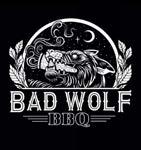
By David W. Brown
Andrew Caskey never expected to help spark a culinary renaissance in North Louisiana. After all, he came from a family of welders, not cooks. But because of his food truck, Bad Wolf BBQ, and its award-winning brisket, the college town of Ruston has become the Louisiana outpost of a modern barbecue movement sweeping across Texas. All it took was some dedication, artistry, entrepreneurial spirit — and weekends off work.
“Ialways had a love for it in the backyard,” Caskey told me. “Barbecue takes hours, and I would just do it whenever I had time off work — making an event out of it, basically, for myself.” He would sometimes plan out entire days based around cooking whole briskets that take 16 hours or more to cook. “I’m a very slight perfectionist,” he said with a laugh.
But for him, barbecue was a passion project and a creative outlet. “Sometimes I would spend that much time on something, and then realize, ‘Oh, this didn’t turn out that great!’ It inspired me to tinker with my recipes and techniques as a hobby.” In turn, he said it slowly developed into “something that I was borderline obsessed with,” and he became passionate about developing this skill that would improve over time.
Getting time to do it, though, was hard. Caskey worked in the oil field industry, like his brother, father, uncles, grandfather and great-uncles. At the start of his career, he did directional drilling, boring beneath roads and wetlands and such for pipeline construction. It was good work for a while, but when things slowed in Louisiana, he changed jobs so that he wouldn’t have to travel all over
the country. He found work as an operator at a salt cavern storage facility that stores liquified petroleum gases.
Whenever Caskey had free time, he spent it at the grill. After getting promoted to safety management, doing hazard analyses and developing programs for mechanical integrity, for the first time he found himself in a job where he worked from Monday through Friday, with weekends off. That meant the freedom to barbecue every single weekend — and he began thinking seriously about a life outside the oil industry.
It was a trip through Texas that pushed him over the edge. He had heard about the modern barbecue movement there, but had never really experienced it. Once he built up some vacation time at his nine-to-five, he decided to explore it. “Eight or nine years ago, a lot of chefs with a lot of experience decided to get into the barbecue world and elevate the dishes. They were making something different and creative and new and modern, and I was really inspired by that.”
He planned a trip through Dallas, then down to Austin and on to Houston, and then back home. Almost immediately, he realized that this was not your father’s barbecue. “Basically, I only knew the barbecue that I grew up with. The newer, modern barbecue that was coming up in Texas was something completely different, though.”
A lot of the old-school barbecue that most of us are familiar with is geared toward being an affordable meal with large cuts of meat to
feed a large crowd. There’s nothing wrong with that kind of barbecue, Caskey said. But he wanted to do something a little more elevated. “I was already passionate about barbecue before that, but after experiencing other people doing the sort of barbecue I was looking to do, that’s when I knew it was something that maybe I could do — something I had to do.”
He decided to get in the business. He purchased a trailer with the savings he had from working in the oil field; his plan was to cook on the side on the weekend, but to stay in the oil industry. “I didn’t have any experience in the restaurant world, and I didn’t feel comfortable just jumping into the deep end, quitting my job and buying a brick-andmortar building,” he explained.
Monday through Friday, he worked at the oil field job. On Friday nights, he would start cooking briskets. On Saturdays, he would open the food truck for business.
“If I did sleep at all on Friday nights, I would set a watch timer and I would sleep in 30-minute intervals so that I could wake back up, go refuel the smoker, and cook those briskets all through the night. Then we would serve them on Saturday — and then do the same thing Saturday night to serve on Sunday. And then I would go back to the full-time job Monday through Friday.”
He added with a laugh, “So, yeah, it gets old really quick.”
But the Ruston community’s response fueled his efforts, and he kept at it until he felt confident he could leave his oil career and just barbecue for a living.
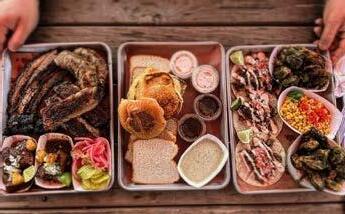
Bad Wolf BBQ’s main protein is brisket — a Texas inspiration. Traditional barbecue doesn’t involve much, if any, trimming of the meat, or much seasoning at all. It was just a way for butchers to get rid of cuts of meat that people didn’t purchase, or didn’t want to purchase because of the difficulty in cooking them properly.
But in modern barbecue, he said, “People are doing very aggressive trims on brisket. We get something like a 33% yield of finished product off our brisket, and then we do a 20-hour-plus smoking process on them. So, we’re spending almost an entire 24-hour day on a brisket. Just that smoked meat is already going to be great. But to take that smoked protein and then make dishes with it that are more elevated? This is where modern barbecue shines.”
Caskey set up Bad Wolf BBQ at Heard Freighthouse Food Park in Downtown Ruston, a food truck concept similar to what you see all over the place in Austin and Dallas. The park is the brainchild of Desi Bourgeois, the former executive chef of Google’s dining program in Austin. It was perfect for Caskey, because Bad Wolf BBQ is not the sort of food truck that turns up at conferences or outside bars. In fact, they don’t move around at all.
“Heard Freighthouse Food Park has been a great avenue for us to be able to do exactly the sort of food that I am passionate about,” he said. When he first started the food truck, Caskey and his father did some local events, but realized quickly that those markets were more about feeding large numbers of people. “It’s not a repeat customer base, and I just didn’t feel like I was putting out food that I could feel passionate about.” Instead of quantity and easy money, he leaned into quality: serving exquisite cuisine on the weekends for the locals in the community, hoping to gain people’s trust with passion, and create a repeat customer base. The plan worked. In 2018, he quit his day job and turned to barbecue full-time.

A successful restaurant — whether brickand-mortar, food truck or pop-up — is a testament to the community that produced it, as Bad Wolf BBQ has demonstrated. It speaks to the local economy, local tastes, local produce and local community spirit. That is one reason why Experience Ruston, an organization that promotes tourism in Ruston and Lincoln Parish, asked Caskey in 2023 to participate in the first annual Louisiana Food & Wine Festival, held in Lake Charles.
The idea behind the festival, according to Jan Gourley, its founding director, was to bring people to Lake Charles so they could see, in person, what the city has to offer. In doing that, organizers hoped to “showcase all the things we love about Louisiana — the food, the music, the people, the culture,” she said. No one could have prepared them for the response, not only from top chefs and rising stars across Louisiana, but also from across America, Mexico and Canada.
“We brought in some celebrity chefs, as well as some great chefs in the state,” she said. “We had a chef from Commander’s Palace in New Orleans, and Dook Chase — Leah Chase’s grandson — with the restaurant Chapter IV. Brennan’s came, and we brought in Chef Tiffany Derry, who is a chef and a judge on the Food Network’s Top Chef. It was just a great mix of local and celebrity talent.” In addition, the festival featured artisans from across the state who create such things as food and beverage-related glassware and cutting boards.
Rouses Markets was the official presenting sponsor of the event. Communities from across the state also found local talent to represent them at the festival. “We had A Taste of Louisiana Alley, featuring several destinations from around the state,” said Gourley. “They brought in culinary talent, and sometimes a brewery or a distillery, to showcase their cities. It just activates the destination a bit more than just having something like a brochure — and anyway, at the Louisiana Food & Wine Festival, people want to taste all of those different kinds of cuisines [from] throughout the state, obviously.”
Bad Wolf BBQ represented Ruston, though Caskey kept expectations in check about his chances in the festival tasting competitions. “There were so many chefs from all over, and especially some great ones from South
Louisiana, which is mostly about seafood. But we are from North Louisiana,” he said. “We came mainly for Fire on the Lake, which was a barbecue and pitmaster event of the festival on the first [Friday] evening.”
For that event, Caskey prepared a miniature version of one of Bad Wolf BBQ’s best-loved dishes. “It was a small serving of smoked brisket with something from our region in North Louisiana: sweet potatoes.” The recipe was simple, and relied on technique. With his brisket, he paired three ounces of mashed sweet potatoes, smoothly blended, with fresh rosemary leaves, crushed pecans and cane syrup, topped with his signature Louisiana white sauce.
“Something like that just feels to me a lot more modern and elevated than just traditional meat-salt-butcher paper,” he said.
The next day, the festival’s Grand Tasting was set to be a major culinary event. “We set up and did the whole thing on Friday. And then the next day on the Grand Tasting day, we set up and did it all again.” From what he saw, pretty much everybody there was doing traditional, Louisiana-style dishes: seafood, primarily. He again served the smoked brisket with sweet potato dish.
Caskey was pleased to win the People’s Choice award for Best Meat. But to his astonishment and delight, he also took home the trophy for Judge’s Choice Best Overall Dish for the festival.
“I was extremely surprised when that happened,” he said, explaining that barbecue is not typically what people think of as being a Louisiana dish, let alone one of the top dishes in the state. “People from around the world traditionally associate seafood and things like that with Louisiana. For the Judge’s Choice to choose a barbecue dish was a great win — not only for me, but for barbecue overall. It’s still hard for me to believe barbecue would come out as well as it did at an event like this — in Louisiana! Can you believe it?”
Rouses Markets will again present the 2024 Louisiana Food & Wine Festival September 19-22 in Lake Charles.
Since then, business has continued to be great, and Caskey expects it to grow even more. Heard Freighthouse Food Park is expanding, and its owners have even built a stage for local performers to entertain diners.
“We have a lot of things coming to Downtown Ruston, and that is one of them.” The food park is located in the middle of Downtown Ruston, at the railroad tracks. “You can’t miss it!” he said.
Bad Wolf BBQ feeds diners Thursday through Saturday for lunch service, from 11am to 3pm. “Right now, we do a lot of prep in the beginning of the week. And we are going to have a lot more expanded hours and things like that as the food truck park develops and starts holding events at nighttime.”
He is proud of what he has built and considers himself lucky. He said that someone interested in taking the same path that he did — following a passion through to a livelihood — can do a few things to set themselves up for success.
“The best advice I have is to just take that first step and do it — but try to do it smart. Try to do it strategically. Don’t do it without thinking about it. But so many talented people get hung up with insecurities.” If you truly have a passion for something, that passion is going to outweigh some of the hardships that you’re sure to face, he said. “It’s going to be worth it. Do it for the love of the thing. If your heart’s in the right place, and if you’re doing it for the right reasons, it’s going to go better than your wildest dreams.”
ARROW-CIRCLE-RIGHT “I served as an official judge at the inaugural Louisiana Food & Wine Festival in Lake Charles, Louisiana. Our task as judges was to try all of the dishes at the Grand Tasting and score them based on taste, presentation and creativity. I have never eaten so much in one day, not even on Thanksgiving. We awarded Bad Wolf BBQ our Judge’s Choice for “Best Overall” dish. It featured rosemary sweet potatoes, smoked brisket, a signature white sauce, pecans, syrup and fresh rosemary. I’ve been dreaming about that dish ever since. Bad Wolf and Gonzo’s Smokehouse & BBQ (a crowd favorite at Fire on the Lake, a Louisiana Food & Wine Festival barbecue event the night before the Grand Tasting) inspired the concept for this entire magazine. Their food was that good.”
– Marcy Nathan, Creative Director, Rouses Markets

BARBECUE SPAGHETTI
Makes 4 servings
This is a great way to use up leftover pulled pork, though shredded chicken also works. The cooked spaghetti noodles are stirred into the rich sauce, ensuring every strand is generously coated with flavor.
WHAT YOU WILL NEED:
1 jar (24-ounce) Rouses Marinara Sauce
1 jar (18-ounce) Rouses Memphis Madness Barbecue Sauce
1 tablespoon salt
1 (16-ounce) package spaghetti
1 pound pulled pork
HOW TO PREP:
In a large pot, combine the pasta sauce, barbecue sauce and pulled pork. Stir well to combine. Simmer the sauce mixture over medium-low heat while you cook the spaghetti.
meat are well-combined and heated through, approximately 4-5 minutes.
Transfer the spaghetti to a large serving platter. Top the spaghetti with any remaining pulled pork and drizzle with additional BBQ sauce if desired. Serve hot.

GOLDEN SLAW
Makes about 6 cups Mustardy Memphis coleslaw adds flavor and zing to pulled pork. Some say the best pork sandwiches in Memphis are at Payne’s Bar-B-Q, a family-run business that’s been serving up some of the best barbecue in Memphis since 1972. The sandwiches are topped with a generous helping of mustardy slaw.
WHAT YOU WILL NEED:
¼ cup yellow mustard
¼ cup mayonnaise
In another large pot, bring 4 to 6 quarts of water to a boil and season with salt. Cook the spaghetti according to the instructions on the package. Once the spaghetti is cooked, drain it and return it to the pot.
Add the sauce mixture to the spaghetti and heat over medium-low heat, stirring frequently, until the noodles, sauce and
¼ cup sugar
¼ cup apple cider vinegar
1 tablespoon hot sauce
½ teaspoon celery seed
½ teaspoon salt, or more to taste
½ teaspoon freshly ground black pepper, or more to taste
1 large head green cabbage, cored and finely chopped (about 10 cups)
HOW TO PREP:
Whisk mustard with mayonnaise and sugar in a very large bowl. Gradually whisk in vinegar, hot sauce and celery seeds. Season with salt and pepper. Add cabbage to the dressing and toss to coat.

MEMPHIS BBQ RUB
Makes about 2 cups
WHAT YOU WILL NEED:
1 (packed) cup dark brown sugar
½ cup hot paprika
4 tablespoons kosher salt
4 tablespoons onion powder
4 tablespoons garlic powder
2 tablespoons ground black pepper
1 tablespoon cumin seed
1 tablespoon dry mustard
HOW TO PREP:
In a large bowl, combine all rub ingredients and mix well.


ARROW-CIRCLE-RIGHT Memphis, much like Kansas City, has its own famous barbecue style. It is centered around pork, particularly ribs and pork shoulder. Whether you’re entering the prestigious World Championship Barbecue Cooking Contest — the Super Bowl of Swine — during Memphis in May, or a Memphis Barbecue Network contest, the main categories are pork.
While certain barbecue traditions, like those in Texas, prefer wood for smoking, Memphis pits typically rely on charcoal, which imparts a subtle smokiness to the meat.
Memphis barbecue sauce is tomato-based, and often contains a combination of ketchup, brown sugar, garlic, mustard, hot sauce, spices and vinegar. It is tangy yet slightly sweet, with a hint of heat, and the perfect accompaniment to the smoky flavors of the barbecue. It typically has a thinner consistency compared to some other regional styles.
Memphis ribs are offered in various styles: dry, wet or “muddy” — a combination of the two.
Accompanying side dishes include yellow mustard coleslaw and barbecue spaghetti, a unique fusion of Italian and Memphis flavors. Originating in the 1950s, this dish is credited to Brady Vincent, former owner of Brady & Lil’s, a beloved barbecue eatery in Midtown Memphis (now known as the Bar-B-Q Shop and under new ownership).

ARROW-CIRCLE-RIGHT The Kansas City style of barbecue originated in Kansas City, Missouri. Unlike Texas barbecue, which leans heavy on brisket, there’s no one major meat. You’ll find ribs, brisket and burnt ends (a staple of Kansas City barbecue, which are crispy bites from the fatty edges of cooked briskets), along with pork, chicken and lamb. But what truly sets Kansas City barbecue apart is the seasoning and sauce. Meats are generously seasoned with a dry rub made with a brown sugar and paprika base, then finished with a tomatobased sauce made with ingredients like ketchup, molasses, brown sugar, vinegar, spices and plenty of black pepper.

ARROW-CIRCLE-RIGHT Mississippi proudly boasts some of the best pitmasters in the country and has one of the highest numbers of competition-winning pitmasters, including The Shed BBQ, which is led by Brad Orrison, the team captain and owner of the Ocean Springs, Mississippi, restaurant of the same name. The Shed has its own line of sauces, which are available at Rouses Markets. Look for The Shed Original Southern Sweet, Sweet & Tangy and Mississippi Gold. J. Lee’s Gourmet BBQ Sauce has its roots in Biloxi, Mississippi, where it was originated by founder James Lee III, known as J. Lee.

ARROW-CIRCLE-RIGHT Western Kentucky barbecue sauce, particularly known for its unique style in the Owensboro region, is a vinegar-based sauce often used with mutton (sheep meat). It has a tangy and slightly spicy flavor profile, different from the sweeter tomato-based sauces found in other regions of the United States. Key ingredients include vinegar, Worcestershire sauce, pepper and garlic. This type of barbecue sauce is an essential part of Western Kentucky’s culinary identity, especially at local barbecues and festivals.

ARROW-CIRCLE-RIGHT Alabama white sauce, also known as Alabama white barbecue sauce, was invented by Robert Gibson at Big Bob Gibson’s Bar-B-Q in Decatur, Alabama. This tangy, peppery, thin, mayonnaise-based sauce was originally made for smoked chickens but you can use it as a marinade or basting liquid, or a barbecue dipping sauce. Find the recipe for Alabama white sauce at www.rouses.com.

Dreamland’s Southern-style BBQ sauce is vinegarbased and packs a little bit of heat. It’s the BBQ sauce Dreamland is known for — and the only one they offer. Warm this sauce and serve with pork, chicken or beef.
Sourced from independent farmers and ranchers to ensure you’re getting the very best
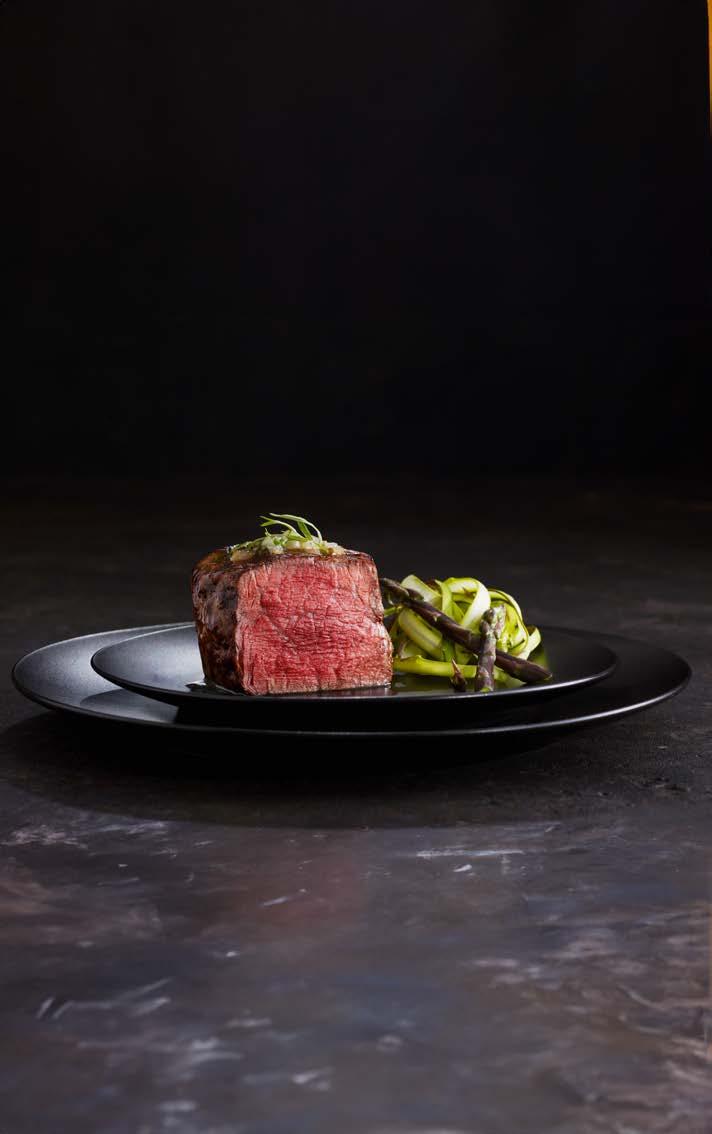







By David W. Brown
This year, more than 30,000 people turned up for Hogs for the Cause, the annual barbecue competition and music festival held at the UNO Lakefront in New Orleans. The event has become one of the largest culinary events in the country, featuring more than 20 bands, and more than 90 barbecue teams serving up their best dishes for hungry festivalgoers.
You probably know all about that because you were probably there! What you might not know is that Hogs for the Cause is a nonprofit organization, and all the money they raise goes to families and facilities confronting pediatric brain cancer, the leading terminal cancer in children in the United States.
“The focus from the very beginning has always been to provide direct grants to families with a child going through brain cancer treatment,” said Brad Gottsegen, who has been involved with Hogs for the Cause almost from the start. In the last few years, with the phenomenal growth and success of Hogs for the Cause, the organization has expanded its outreach.
“We are also now donating money to cancer centers around the country, and we’ve built two standalone residential lodges: one at Children’s Hospital in New Orleans, and then one at Children’s Hospital at Our Lady
of the Lake Hospital in Baton Rouge.” Each facility hosts more than a dozen individual suites that families can stay in free of charge while their children are inpatients at the hospital.
Hogs for the Cause — and the combined power of food, family and community — has raised staggering numbers. At their 2024 event, which set new records for attendance and sales, the “world’s most delicious fundraiser” (as Forbes magazine described it) raised a staggering $4.3 million.
And every dollar is needed. Since the organization’s founding in 2009, Hogs for the Cause has given out over $2.3 million in direct grants to more than 1,800 families battling pediatric cancer, and almost $9 million to hospital programs and charities nationwide.
Locally, as Gottsegen described, more than 1,500 families from outside the New Orleans area have stayed at “Hogs House” at Children’s Hospital New Orleans. That project cost $2.5 million, and is a life-changing service.

On average, families whose children are receiving ongoing cancer treatments have to use these facilities for three weeks, which would ordinarily involve debilitating hotel expenses.
This year, Hogs House in Baton Rouge opened for patients at Our Lady of the Lake Children’s Hospital. Annually, more than 13,000 families must travel to Baton Rouge to seek care. The family housing facility cost more than $2 million, and Hogs for the Cause is still raising money to keep it running.
It’s not just a Louisiana thing, either. In Mississippi, the organization has devoted over $1.5 million for Children’s of Mississippi, renovating a 22,500-square-foot “Hogs for the Cause Wing” that is dedicated to inpatient beds for children battling cancer and blood disorders. In Greenville, South Carolina, they’ve raised $1 million for Prisma Health Children’s Hospital – Upstate for a cancer inpatient unit. They’re doing similar things in other states as well.
Those are staggering figures for a relatively young, grassroots community fundraiser. According to Gottsegen, part of the organization’s success is the way it is structured. Hogs for the Cause is the overseeing organization. It is a 501(c)(3) nonprofit, which means it exists exclusively for charitable purposes. In addition to the
The Hogs for the Cause Family Support Home, or “Hogs House,” at Our Lady of the Lake Children’s Hospital opened in February 2024. It provides free on-campus housing for families from outside Greater Baton Rouge with children receiving care. The first Hogs House was built at Children’s Hospital New Orleans in 2018.
organization, their big annual fundraiser — the barbecue festival and competition — is also called Hogs for the Cause.
At that event, Gottsegen says, about 95 teams — mostly from Louisiana with a few others from across the South — participate in a barbecue competition. But the fundraising doesn’t begin on the big day. In fact, it is a year-round activity on the team level.
“Each one of those 95 teams is responsible for individually fundraising for Hogs for the Cause, in addition to participating in the event itself, where we cook food that we sell and serve to the general public,” he says. Gottsegen’s team, Fleur de Que, is also a 501(c)(3) nonprofit — as are many other teams. “The sole purpose of our team — as well as every other team out there — is to raise money for Hogs for the Cause.”
Being their own nonprofit increases accountability and allows flexibility in fundraising for the larger organization. Rouses Markets is a longtime sponsor of Fleur de Que, and will continue supporting the group and its goals in 2025. Rouses also supports Hogs for the Cause Baton Rouge, and donates bourbon for their events.
Fleur de Que has been the top fundraising team with Hogs for the Cause for 14 straight years. Most of its money comes directly from individual donors, as well as corporate sponsorship.
“That’s how most of the teams do it,” Gottsegen says. “We’re soliciting friends and family and business associates and things like that for direct contributions.” In addition, he says, some teams hold other fundraising events throughout the year. “There’s one team right now raffling a Jet Ski watercraft. We’ve done car raffles and such in the past that have all been successful. Some teams will do food sales and events during Mardi Gras and on St. Patrick’s Day — things like that. Whatever it takes to raise money. And of course, all of the food that we sell in our individual booths at the Hogs for the Cause event goes to the Hogs for the Cause organization.”
And the teams take that food very, very seriously — with customary New Orleans panache. There are the standard competition categories like any other barbecue cook-off — whole hog, ribs, pork butts, sauce — but some non-traditional categories as well, such as side dishes that must use Blue Plate Mayonnaise, or incorporate Tabasco Hot Sauce, both of which are sponsors of the event. The teams are also free to shake things up. Fleur de Que, for example, serves a perennial fan favorite called Oysters Porkefeller, which are charbroiled oysters with pulled pork on top. Other teams use mirthful, local pride with their themes, such as Team Hupigs Pies — a play on Hubig’s Pies — which makes and sells tens of thousands of

apple pies filled with pork at the festival, and even serves them in little paper wrappers.
“There’s some really super creative stuff out there, and there are absolutely no rules,” says Gottsegen. “You cook and serve whatever you want, and I think everything out there is fantastic. All the teams put their heart and soul and every bit of love they have into what they’re cooking, and everybody takes it very seriously.”
Community drives Hogs for the Cause teams. “That’s one of the most important things about Hogs that people don’t really realize until they get out there and see what it’s all about,” said Gottsegen. Hogs for the Cause, he says, is a community unto itself — a family — and everyone involved has built lifelong friendships with people that they likely never would have crossed paths with, had it not been for the organization. “We all live in different places, have different lives, and different social and work networks. And yet we all rally together around this one specific cause — children’s brain cancer — and this one specific event. And it’s just amazing how all of that coalesces.”
And the food at the Hogs for the Cause event is very much community style as well. These aren’t teams of professional chefs or restaurateurs. Hogs teams regular men and women with regular jobs. “I’m an orthodontist — not a chef,” says Gottsegen. “And most everybody involved with Hogs is just like that: regular dudes, just weekend barbecue warriors. And in a sense that makes it even more a product of our community, because these are family recipes. This is as ground-up as you get.”
A lot of work goes into their fundraising, but he calls it a “labor of love.” The longer Hogs for the Cause goes on, the more generational it becomes in nature. “We have two guys on our team whose dad was a barbecue master for years, and the recipes that they use were directly passed down from him to them. And they even had grandchildren out there this year, that came with them from Georgia. And the grandson is now learning these same recipes that are now third generation — maybe even longer than that.”
The teams do almost everything locally. Most are from Louisiana, with a few from Mississippi. Fox Brothers BBQ, a famous Atlanta-based barbecue chain, raises


money for Hogs for the Cause, as does another team that joined this year from Kentucky. A group from Tennessee does its own independent fundraising there, even holding a golf tournament specifically for the cause of helping families facing the scourge of children’s brain cancer. And though it is all local — and slowly becoming a regional Southeastern program — the good that Hogs for the Cause does is nationwide, sending grant money to suffering families in all 50 states.

Anyone wanting to get involved should first attend the annual event to see what it’s all about. “Experience it. Feel the energy. See if it’s something that you really enjoy and something that kind of speaks to you,” Gottsegen says. Just by attending, you are financially supporting the organization and everything that it accomplishes. And if you want to do more, he suggests approaching a team. “Go to somebody’s booth and say, ‘Hey, I’m really looking to get involved. I want to volunteer my time.’ It won’t take long before you find someone who wants to bring you on board.”

The teams need all types of volunteers. Gottsegen first got involved not because he’s a pitmaster, but because he runs a small business, and knew a little bit about how to use QuickBooks and Microsoft Excel. The team needed a treasurer, and he soon got swept up in it.
“Everybody has their own sort of story like that. And there are many people involved doing it because they had a friend or a family member who had a child diagnosed with brain cancer. It hit them in the heart, and they wanted to somehow help people going through such a tragic period,” says Gottsegen.
“That’s what we are trying to do, and we’re just getting started. Wherever there’s a family in need, Hogs for the Cause will be there to support them.”
Story courtesy of Bonnes Nouvelles- Evangeline
Jack Miller developed his tangy sauce in his American Inn restaurant in Ville Platte. However, the story really started in Sunset, Louisiana.
Four Miller brothers from Germany settled in St. Landry Parish in the 1800s. A descendant, Alexon Miller, married Alicia Leger. One of their sons, Dosite “Zick” Miller, married Olivia Faul, daughter of Phillip Valmon Faul and Eva Boudreaux. The Zick Miller family included 12 children: Charles, Lillian, Rose, Odile, Alice, Jack Dosite, Alexis, Simon, Louise, Eva, Phillip and Theresa.
The Zick Miller farm produced most of the family’s food, fruits, vegetables and animals for meat. They operated a small store in Sunset. Zick and the boys tended the farm and the store while Olivia and the daughters kept house, cooked and sewed the family’s clothes. Jack worked in the store and enjoyed cooking when he got the chance.
For the times, the Zick Miller family was well off. He loaned money to help others get started. When the Great Depression hit and money could not be collected and the sweet potato crop could not be sold, the family was in trouble.
One son borrowed $25 and Jack began driving a delivery truck for Tony Chachere’s pharmaceutical company in Opelousas. In 1929, at age 19, Jack started hauling sweet potatoes in a Model A truck to the Houston Farmer’s Market, where a 100-pound bag sold for 45 cents.
Soon Jack embarked on an entrepreneurial quest of many ventures. He traveled over 13 states going house to house in cities to buy and later sell old gold items. He even sold furniture. His desire to cook drew him back to St. Landry Parish in 1935, and he began his cooking career at the Dixie Cafe in Opelousas.
He managed the Acadian Inn and worked at the Cedar Lane Club, too. At those establishments he associated with several well-known chefs — Toby Veltin, Levi and Etienne Daigle, and John Mamalakis.
In 1937, Jack married Joyce Chapman of L’Anse aux Pailles in Evangeline Parish. Joyce worked at the Cedar Lane Club as a hatcheck girl.
Jack’s dream was to have his own restaurant so, in 1941, he opened the American Inn in Ville Platte. Jack and Thaddus Winfiele leased a building from Burke Coreil located on East Main Street named the Pig Stand. Jack borrowed $300 from his father to match Winfiele’s $300 to open the American Inn in Ville Platte. It was a drive-in like the Acadian Village Inn in Opelousas. Barbecue plates, hamburgers and hot dogs were the main fare. Hamburgers sold for 10 cents and labor was $3-$5 per week for a 12-hour day.
In five years, Jack bought out Winfiele’s share. Jack’s dream had been to open a chain of drive-in food places, but World War II dashed those hopes.
The menu had to change during World War II because beef and pork were being rationed. Those hungry GIs coming from Fort Polk were ordering hot dogs and hamburgers, and Jack could not meet their demands. The only meat he could obtain locally was chicken. He changed the menu to barbecued chicken and sent Joyce out to buy chickens from local farmers.
Jack began to experiment with his own barbecue sauce. After three months, he had a sauce that pleased his palate. He knew it was good because his customers began asking to buy some to take home.
In 1953, Jack relocated the American Inn to the east end of Ville Platte. People going to Chicot State Park would stop and buy barbecue sauce. Before long, the sauce sales were almost equal to those of the restaurant.
In 1955, Jack obtained a license to manufacture and sell barbecue sauce wholesale. One-fourth of the American Inn building was closed off to create the sauce factory. When the sauce factory was opened, the sauce was cooked in 6-gallon pots on the restaurant stoves. Everything was done by hand — cutting onions, cooking, bottling and attaching labels. To market the tangy sauce, Jack and Joyce went on the road in Acadiana. They would put the sauce on a piece of bread and, after a taste, the store owner placed an order.
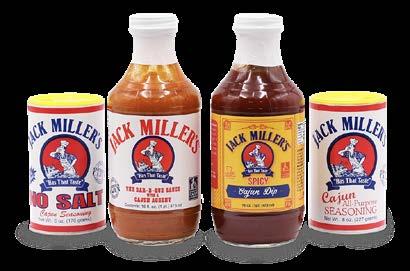
After a restaurant fire in 1962, the American Inn was closed.
To satisfy Jack’s desire for cooking, he did a lot of catering in the 1960s. In New Orleans, he catered at Dominican College and De la Salle High School. Probably the largest function he catered was serving 7,000 barbecue sandwiches for a regional John Deere company picnic.
In the late 1960s, Jack bought two 150-gallon stainless steel pots and a boiler
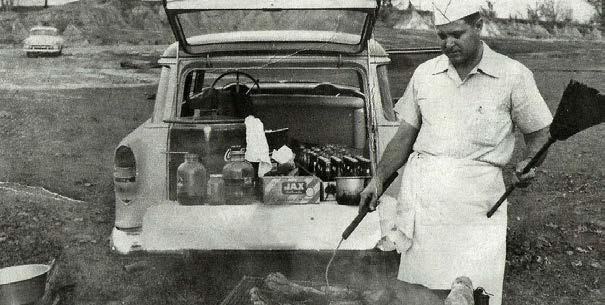
unit to heat the pots. At the time, his son, Kermit, was assigned to a boiler room on a naval ship off the coast of Vietnam. Jack sent Kermit a picture of the new equipment with a note that read, “You better learn to run the ship’s boiler, so you can run this boiler.”
Kermit joined his father in the business in 1970. He made deliveries and managed the books, and observed the production as often as he could. “I was an apprentice to my father and Chester Meche. I took over in 1980,” shared Kermit. Jack taught Kermit the basics of running a business. A good businessman knows every aspect of his business — he can cook the product, run the machines and greet the customer.
In 1980, the state of Louisiana expropriated Jack’s property on 1-49 to make LaSalle and Main one-way streets. Jack moved his home and built a new plant at 646 Jack Miller Road.
Shortly after the new plant was completed, Jack retired. He passed away in 1988. Besides his son Kermit, Jack and Joyce Miller were the parents of three daughters.
During his life, Jack loved to be with people. He served them food in his restaurant and also helped the community. He was the first recipient of the Ville Platte Chamber of Commerce Businessman of the Year Award. He served as Opelousas King of Corinth X in 1976 and he was the 1981 Cotton Festival Parade Marshal. He and Joyce were recognized as the Evangeline Parish Great American Family in 1988.
In 1990, the Ville Platte Rotary Club awarded Jack the Paul Harris Fellowship posthumously. Jack also belonged to the Lions Club and the Woodmen of the World, and had been a volunteer fireman.
After his father’s retirement, Kermit became the head of Jack Miller Food Products. He and his wife, Sheila, introduced two new products: Jack Miller’s Cajun All-Purpose Seasoning and Jack Miller’s Cajun Cocktail Sauce.
“It is amazing how my father started a business with so little and became a success. He always did the right thing at the right time, and he had the personality to market his product.”


Kermit followed in his father’s footsteps in other areas. He is a member of Vietnam Veterans Association, holds a Paul Harris Fellowship in the Rotary Club, is a member of the Ville Platte Chamber of Commerce and is a lecturer at Sacred Heart Catholic Church. Kermit’s community service endeavors were honored when he was named Ville Platte Man of the Year in 1977 and Colonel Cotton in 1991.
On May 27, 2004, Kermit Miller, president and general manager of American Inn/Jack Miller Food Products, was presented the 2004 Lantern Award for Agribusiness/Food Technology by Governor Kathleen Babineaux Blanco and Louisiana Economic Development. The presentation was made at the Governor’s Mansion in Baton Rouge.
Kermit exhibits pride and admiration when discussing his father’s business. “It is amazing how my father started a business with so little and became a success. He always did the right thing at the right time, and he had the personality to market his product,” shared Kermit.
Over the years, Kermit and Sheila have attended numerous food shows to remain in contact with customers. Other family members have worked at Jack Miller Foods Product Plant at various times. In recent years a third-generation family member, Kermit and Sheila’s son, Christian, has joined his parents at the barbecue sauce plant. Maybe some new products will be offered, too.
Yes, the third generation of Millers is now making barbecue sauce.

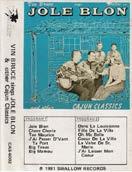

ARROW-CIRCLE-RIGHT “’Jolie Blonde,’ rendered in various ways—’Jolie Blonde,’ ‘Jolie Blond,’ and ‘Jole Blon’—is perhaps the most famous Cajun song. Originating as a folk melody in French Louisiana, this iconic waltz captures the essence of Cajun culture and is considered the ‘Cajun National Anthem.’”
Swamp Pop enjoyed peak popularity in the late 1950s and early 1960s but continues to have a dedicated following and influence on contemporary artists.
ARROW-CIRCLE-RIGHT In 1985, the late Rockin’ Sidney Simien, a native of Lebeau, Louisiana, recorded “My Toot Toot,” introducing the world to zydeco, a vibrant South Louisiana Creole accordion dance music. The song, produced at Floyd Soileau’s Maison de Soul studio in Ville Platte, quickly became a multi-million selling international sensation. It won a Grammy in 1985 for Best Ethnic or Traditional Folk Recording. Maison de Soul is one of four record labels under Soileau’s Flat Town Music

ARROW-CIRCLE-RIGHT Swamp pop emerged as Louisiana’s answer to rock ‘n’ roll in the 1950s and 1960s. The fusion of rock ‘n’ roll, rhythm and blues, country, and Cajun and Creole influences spoke to the heart and soul of the region. At the Swamp Pop Museum, housed within a century-old railroad depot, visitors can immerse themselves in the history and legacy of swamp pop. There are stage costumes, rare memorabilia and a wall of fame adorned with autographs of the genre’s luminaries. The Ville Platte recording studios of Floyd Soileau, whose Swallow and Jin labels introduced many stars and hits between 1957 and 1975, were central to swamp pop’s rise to prominence. Soileau’s famed record shop, once a fixture on East Main Street, served as a hub for musicians and enthusiasts alike until 2013, when it transitioned into an online enterprise — continuing to share the magic of swamp pop with the world.

ARROW-CIRCLE-RIGHT Ville Platte, or “flat town,” is the largest city and parish seat of Evangeline Parish. It is named for the area’s relatively horizontal topography.
Ville Platte holds dual titles: It’s both the “Smoked Meat Capital of the World” and the “Swamp Pop Capital of the World.” Le Festival de la Viande Boucanée or, as it’s commonly referred to, the Smoked Meat Festival, has been held every year in Ville Platte since 1992.


ARROW-CIRCLE-RIGHT Kary Lafleur’s journey in the food industry traces back to his roots. Born into a lineage of chefs, he inherited his love for cooking from his father, Archange Lafleur.
During World War II, Archange Lafleur served as a chef in the United States Army, honing his skills under the most demanding conditions. After the war, he settled in Ville Platte, Louisiana and opened the Pig Stand Restaurant, a local institution that would thrive for three decades.
The restaurant was renowned for its barbecue plates, which Lafleur dressed with his own Cajun style sauce. In 1963, he began bottling and selling Pig Stand Bar-B-Q Sauce. Then in 1975, Archange was struck by the idea of marketing a ready-made roux after customers repeatedly asked to buy small quantities from the restaurant. Archange and Kary created Kary’s Roux, a traditional dark Cajun roux made from flour and oil, cooked slowly until it is the perfect color. Kary’s Roux is a convenient solution for home cooks eager to savor the flavors of Cajun cuisine without spending hours in the kitchen.
Today, Kary’s Roux has extended its line of products, which includes Kary’s Roux, Kary’s Light Roux, Kary’s “No Fat” Roux, Kary’s Gumbo Mix, Kary’s Bisque Mix, Pig Stand Bar-B-Q Sauce, Pig Stand BarB-Q Basting Sauce, Pig Stand “Hot” Bar-B-Q Sauce and Queen Bee All Purpose Seasoning.

ARROW-CIRCLE-RIGHT It all began in the bustling kitchen of the Walker family’s deli. Dissatisfied with other Cajun seasoning blends on the market, the Walkers took matters into their own hands and made their own mix of salt, pepper, red pepper and garlic. Soon, requests to purchase the seasoning blend poured in, so the Walkers started selling jars of their seasoning to sprinkle on everything from meats to vegetables. Encouraged by the response, they made a bold decision: to share their seasoning blend with a wider audience. And so, Slap Ya Mama Cajun Seasoning was born. The Walkers unveiled their creation to an eager crowd at the Smoked Meat Festival. Today, Slap Ya Mama Cajun Seasonings is a household name.
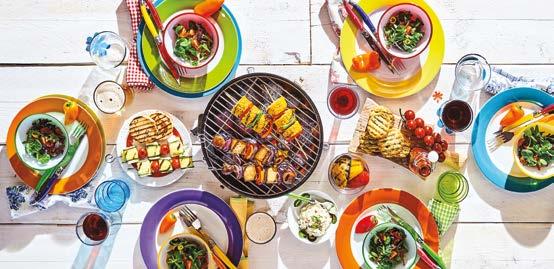






ARROW-CIRCLE-RIGHT Sometimes you want barbecue, but don’t have 12 hours to spend at the smoker. Or you have 12 hours, but don’t have a smoker. Either way, as usual, Rouses Markets has you covered.
“Every day, we offer the Full Slab Ribs on the Hot Grab and Go Case at just about every Rouses location,” said Michael Westbrook, the director of deli, cold cuts and sushi for Rouses Markets. “Generally — especially during the summer — you’ll also find pulled pork as a grab-and-go item.” There is also the popular BBQ Sampler: a smoked chicken leg quarter — that’s the thigh and the drumstick, still connected so it’s juicier and has more flavor — pulled pork and sausage, served with Rouses Barbecue Sauce. “We offer that hot and cold, for lunch and dinner.”
Weekends at Rouses mean Full Slab Friday, offering ribs that are hickorysmoked in-house for three hours, prepared using local seasonings.
“Our customers love it,” said Westbrook. “They absolutely love it. And it’s incredible how much the stores really get behind it.“
The pork ribs are prepared St. Louis style, which is a special trim squaring them off in a beautiful way. “We pick a larger size than most people do,” he said, around a 2.75-pound rib when it’s raw. They are sweet with a kick of spice, and offered sauced or unsauced.
Many stores do their grilling right at the front entrance. Some do them in the back or in the kitchen, all depending on local regulations. Regardless of how your local Rouses prepares them, ordering could not be easier. If you see a Rouses team member cooking out front, you can order as much as you want right there. Place your order, then go in and do
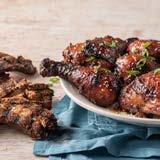



your shopping; when you’re finished, you can pick up your purchased ribs straight from the grill on your way out. If the ribs are being made inside, you can follow the same process, but at the store’s hot food section.
“If you don’t buy our ribs on Fridays, you’re kind of crazy,” Westbrook says with a laugh. “I mean, you can’t buy the ingredients, the seasoning and the sauces, and then smoke your own ribs for the prices we are offering — and I don’t think you could match our quality either!”
And if Full Slab Fridays weren’t enough, the next day is Sizzlin’ Steak Saturdays, where you can get a 100% USDA Chairman’s Reserve 100% Angus Choice New York strip and a twice-baked cheddar and bacon potato at the best prices in town. Stores also occasionally barbecue different cuts as well, such as prime ribeye, when they can offer great deals on them. “We cook them throughout the day, so it’s always fresh,” he says.
On the hot line — the hot food section at your local Rouses — every Saturday you’ll find things like pulled pork, rib tips, chicken, wings, mac and cheese, collard greens and other items you could expect to find at any outdoor barbecue. This isn’t just a summertime offering, Westbrook explains. Around here, barbecue is year-round.
“There are a lot of barbecue places that I think have fantastic ribs, but none can beat us on price,” says Westbrook. “In this day and age, we see customers coming to our stores looking for great-quality food and a better value. And we’re smoking meats every day. We’re cooking every day. We’ve got what customers are looking for.”
– David W. Brown
Serves 4
1 lb. potatoes, cubed (1/2”)
2 bell peppers, cubed (1”)
1 yellow onion, cubed (1”)
1 zucchini, cubed (1”)
1 tbsp olive oil
1/4 tsp pepper
1/2 tsp salt
4 pieces foil (12” long)


more delicious potato recipes and nutrition information, visit www.potatogoodness.com.

Potatoes are the perfect vegetable for you today, and every day! From breakfast to dinner and all the eating occasions in between, the versatile potato goes with everything and provides 2g fiber, 15% daily needs for potassium, and 3 grams of plant based protein.*
DIRECTIONS:
1. Preheat grill to medium heat or oven to 375°F.
2. Microwave potatoes for 5 minutes until partially cooked.
3. Toss potatoes and remaining vegetables with olive oil, salt and pepper.
4. Divide mixture onto foil pieces and fold to seal, leaving space at top for steaming.
5. Grill or bake packets for 15 minutes, or until vegetables are tender.
6. Open packets carefully with tongs to release hot steam. Adjust seasoning before serving.











Available in 20 oz., 32 oz. and 64 oz. sizes

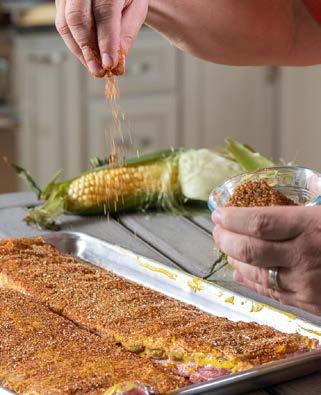
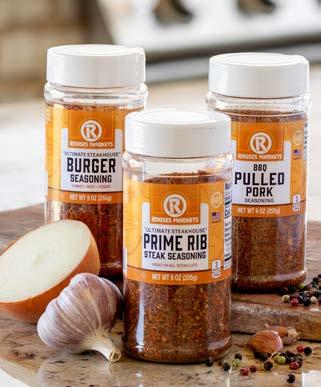
ARROW-CIRCLE-RIGHT Every meat has its own natural flavor, and charcoal and wood chips will imbue a little taste of their own as well. But to get the most from your meat every time you grill, you’re going to want to use rubs and seasonings that you can make at home or find on Rouses Markets shelves.
To make your own dry rub, mix eight parts brown sugar, four parts salt, one-part black pepper and one part of any herb or seasoning that suits your personal tastes and desired flavor profile of the meat being prepared.
Rouses Markets has its own brand of dry rubs, which were developed by high-end competitive barbecue circuit brands from Memphis, Kentucky and other areas. These are awardwinning rubs that have won cooking competitions in Texas and across the American South.

You’ll also find local competition rubs in the barbecue section, including plenty from Mississippi. Mississippi boasts the highest number of prizewinning pitmasters. Among the Mississippi rubs available is Killer Hogs, from the Heath Riles line of rubs. It’s perfect for beef, chicken, pork and fish, imparting a sweet, smoky flavor; Riles, a Mississippi native, has won more than 70 championships.
ARROW-CIRCLE-RIGHT Popular TikTok food critic Keith Lee gave a high rating to a Baton Rouge barbecue restaurant. Lee, who was in Baton Rouge as part of his national food tour, said several people recommended he visit Smoke Bayou. He was particularly impressed with the brisket and sausage, and described the chicken as “the juiciest chicken I’ve ever had in my life.”
BBQ SAUCE
Makes about 1.5 cups
WHAT YOU WILL NEED:
²⁄₃ cup ketchup
½ cup apple cider vinegar
¼ cup brown sugar
2 teaspoons chipotle pepper powder (or, chipotle chili powder)
1 teaspoon ground cumin
1 teaspoon kosher salt
1 teaspoon freshly cracked black pepper
HOW TO PREP:
Combine all ingredients in a small saucepan. Bring to a simmer over medium heat and cook for 5 minutes.
Makes about 2 cups
In North Carolina, barbecue sauces vary based on regional preferences. This East Carolina sauce is thin, tangy and vinegar-based. It is often used as a “mop sauce” for basting meats like pulled pork and chicken during cooking to keep them moist and flavorful. Its acidity balances the richness of the meat. While primarily a basting sauce, it also doubles as a condiment. It works as a great dressing for coleslaw for pulled pork sandwiches.
WHAT YOU WILL NEED:
2 cups apple cider vinegar
1 tablespoon brown sugar
1 tablespoon crushed red pepper flakes
1 tablespoon Texas Pete Hot Sauce or Crystal Hot Sauce
1 teaspoon garlic powder
1 teaspoon paprika
1 teaspoon dry mustard powder
¼ teaspoon cayenne pepper
¼ teaspoon salt
HOW TO PREP:
Whisk ingredients together in a bowl. Drizzle on barbecued meat.
SOUTH CAROLINA GOLD MUSTARD SAUCE
Makes about 2 cups
WHAT YOU WILL NEED:
2 cups yellow mustard
½ cup packed light brown sugar
½ cup apple cider vinegar
½ cup honey
¼ teaspoon cayenne pepper
2 dashes Worcestershire sauce
Kosher salt, to taste
Freshly ground black pepper, to taste
HOW TO PREP:
Whisk together mustard, brown sugar, vinegar, honey, cayenne and Worcestershire in a small saucepan over no heat. Bring to a simmer over medium heat and cook for 3 minutes, then let cool to room temperature for serving. Season to taste with salt and pepper.

HWY. 1 RIBS (TIM’S 3-2-1 METHOD)
Serves 6+
Advertising & Marketing Director Tim Acosta shared his mouthwatering rib recipe with us for this issue. His recommendation?
Spritz the ribs with apple juice before wrapping them with foil, and slather them with honey for the last hour of cooking. Ça c’est bon!
WHAT YOU WILL NEED:
FOR THE RIBS
2 (or more) racks of St. Louis-style ribs
Dry rub (recipe below)
½ cup yellow mustard
²⁄₃ cup apple juice
½ cup honey
Barbecue sauce of your choice
FOR THE RUB
3 tablespoons dark brown sugar
2 tablespoons paprika powder
2 tablespoons salt
1 tablespoon cayenne pepper
1 tablespoon onion powder
1 tablespoon black pepper
2 teaspoons garlic powder
1 teaspoon Colman’s Dry Mustard
HOW TO PREP:
Soak a handful of applewood, hickory or pecan chunks in water.
Remove the ribs from the package and rinse under cold water. Pat dry or set on paper towels to dry. Remove
the membranes on the hollow side of the ribs by inserting a thin knife or other sharp object between the membrane and the rib. Scrape the membrane off the bone; grab it with a paper towel and pull it off by hand. Repeat with the remaining ribs. Mix together all ingredients for the rub. Coat the ribs with the yellow mustard to create a sticky base for the rub. Sprinkle the ribs on both sides with the rub and rub it in a bit, making sure you have full coverage. Place in fridge for a couple hours or overnight.
Set up your smoker for cooking with indirect heat at about 225°F and add the soaked wood chunks. (If your smoker has a drip pan, use it.) Once the smoker is ready, place the ribs bone side down on the smoker grate. Smoke the ribs for 3 hours, unwrapped.
Remove the ribs from the smoker and place the first rack on a large piece of heavy-duty aluminum foil, and pour half of the apple juice over it. Wrap up the ribs well. Repeat with the remaining rack.
Put the packages of ribs side by side on the smoker. Close the lid and leave the ribs to cook for 2 hours.
Take the foil-wrapped rib packages from the smoker and carefully remove the foil. Top the meaty side of the ribs generously with honey. Place the ribs with the flesh side up on the smoker, close the lid and leave to cook for 1 hour, opening every 20 minutes to add more honey.
Take the ribs out of the smoker, and slather them with barbecue sauce before serving.
ARROW-CIRCLE-RIGHT Jack Daniel’s Can Cocktails can be enjoyed on the go, straight from the fridge or out of the cooler. They’re made with real Jack Daniel’s Tennessee Whiskey. Enjoy the crisp, refreshing and unmistakable taste of a perfectly mixed Jack Daniel’s & Coca-Cola; the refreshing taste of Ginger Ale; or the fresh-tasting Tennessee Honey Lemonade. All are great additions to the backyard BBQ.
ARROW-CIRCLE-RIGHT Casa Azul Tequila Soda cocktails are crafted with real tequila from Jalisco, Mexico, sparkling water, natural fruit flavors and agave nectar. They’re available in Watermelon, Peach Mango, Lime Margarita and Strawberry Margarita flavors.
ARROW-CIRCLE-RIGHT Coco Hard Coconut Sparkling Water combines real coconut water with triple distilled vodka or white Caribbean rum.



Makes 6 servings
WHAT YOU WILL NEED:
1 (16-ounce) pack Rouses dried Navy Beans
2 tablespoons kosher salt
1 teaspoon salt
½ pound salt pork or slab bacon, cut into ½-inch chunks
1 medium onion, peeled and chopped
½ cup dark molasses (not blackstrap)
2 teaspoons dry mustard
1 teaspoon ground black pepper
HOW TO PREP:
In a large bowl, cover the navy beans with 2 quarts of water and stir in 2 tablespoons of kosher salt. Allow the beans to soak for 6 hours or up to overnight.
Drain the soaked beans and transfer them to a large oven-safe pot with a heavy bottom and an oven-safe tight-fitting lid. Add 1 teaspoon of salt and enough cool water to cover the beans by 2 inches. Bring to a boil, then reduce the heat to a simmer. Cook, stirring occasionally, until the beans are just barely tender, about 30 to 40 minutes. Drain and remove the beans from the pot.
Preheat the oven to 250°F. Meanwhile, bring a kettle full of water to a boil on the stove.
Return the heavy-bottomed pot to the stove over mediumhigh heat. Cook the salt pork in the bottom of the pot until it begins to brown. Turn off the heat and add the chopped onion, followed by the drained beans.
In a small bowl, mix together the molasses, dry mustard and black pepper. Pour this mixture over the beans in the pot. Add enough boiling water to cover the beans, then cover the pot with the lid. Transfer to the preheated oven and bake, occasionally checking and adding more boiling water as needed to keep the beans covered, until they are tender but not falling apart, about 4 to 5 hours. Remove the pot from the oven and uncover. Stir the beans and season with additional salt if needed. Return the pot to the oven, uncovered, and continue baking until the sauce has thickened and the top is deeply crusty, about 45 minutes more.
Serve beans hot.
ARROW-CIRCLE-RIGHT H.J. Heinz Company sold the first commercially canned baked beans in 1895.


ARROW-CIRCLE-RIGHT What’s the difference between Boston baked beans and other baked beans? Boston baked beans are cooked in a sauce predominantly flavored with molasses, a tradition dating back to colonial times in the region. Salt pork is another important ingredient in Boston baked beans; similar to a non-smoked version of bacon, salt pork is essentially cured pork belly.
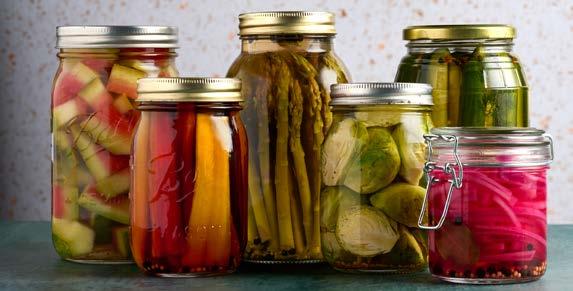
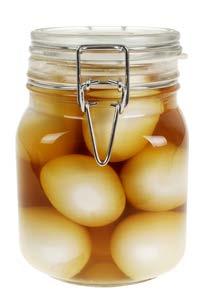
ARROW-CIRCLE-RIGHT A pickled egg is a hard-boiled egg that has been soaked in a vinegarbased solution, typically flavored with various spices and seasonings, just like a pickle is. Pickled eggs have a unique taste that combines the rich creaminess of the egg with the tanginess of the brine and the complexity of the spices.
ARROW-CIRCLE-RIGHT Pickle juice works wonders as a meat tenderizer. The salt and garlic flavors are already present, and the acid in the juice — particularly the vinegar — helps to break down the muscle fibers in meat, making it more tender. However, it’s important to note that the flavor of the pickle juice will also infuse the meat, so it’s best used with meats that will be complemented by the flavor of pickle juice.
ARROW-CIRCLE-RIGHT Refrigerator pickles, hard-boiled eggs, Brussels sprouts, asparagus and other soft vegetables can be quick-pickled in about a half-hour. Add a tablespoon of sugar to the brine if you want a sweeter flavor in your tangy vegetables.
Serves 6 to 8
The key to better potato salad is adding some form of vinegar while the potatoes are still warm. We opted for sweet pickle juice, but you could also use dill pickle juice.
3 pounds russet, Yukon Gold or Idaho potatoes, peeled and cut into 1-inch cubes
2 tablespoons sweet pickle juice
¹⁄₃ cup of reserved potato cooking water
Kosher salt and black pepper, to taste
1 cup mayonnaise
1 tablespoon yellow mustard
1 teaspoon finely diced onions
2 to 3 tablespoons finely chopped pickle, sweet or dill
6 hard-boiled eggs, peeled and diced small
1 teaspoon finely chopped celery (optional)
Paprika, for garnish
Place the potatoes in a large pot; add 1 tablespoon salt and cover with cold water by 1 inch. Set over high heat and cook just until forktender, about 15 to 20 minutes. Drain the potatoes into a colander, but reserve a cup of the cooking liquid to dress the potatoes.

Stir the pickle juice with the cup of reserved potato water and drizzle this over the potato pieces, turning them gently to distribute it evenly. Let sit 10 minutes to absorb the liquid. Transfer the potatoes to a bowl and douse with sweet pickle juice, and set them aside to cool.
As potatoes cool, make the dressing: To a large bowl, add mayonnaise, mustard, onion and pickle; whisk to combine.
Add the potatoes to the dressing, along with the diced hard-boiled eggs and celery, if using. With a large rubber spatula, gently fold everything together until well-blended. Taste the salad and add salt, pepper and/or extra mayonnaise as needed. Cover the potato salad and chill for at least 2 hours, and up to overnight. Serve cold. Finish with a sprinkle of paprika. Potato salad will keep for 4 days in an airtight container.
CAJUN SLAW
Makes 6 servings
WHAT YOU WILL NEED:
1 medium head green cabbage
2 medium carrots, peeled and grated
½ cup mayonnaise
1 tablespoon cane syrup
1 tablespoon Creole mustard
1 tablespoon cane vinegar or apple cider vinegar
1 teaspoon Tabasco, or to taste
Kosher salt
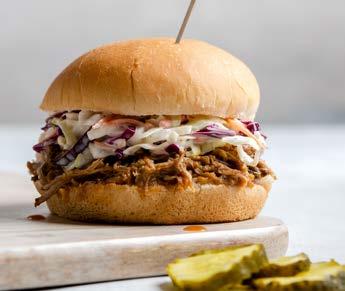
Freshly ground black pepper
1 bunch green onion tops, chopped, for garnish
HOW TO PREP:
Cut the cabbage in half and remove the core. Cut each half in half again, and slice each resulting quarter into thin ribbons. Mix with carrots in a large, nonreactive bowl.
In a separate bowl, whisk together the remaining ingredients to make the dressing. Pour the dressing over the cabbage and toss. Season to taste.
The coleslaw may be covered with plastic wrap and refrigerated for a few hours. Toss again before serving and garnish with green onion tops.
PICKLE SLAW
Makes 6-8 servings
WHAT YOU WILL NEED:
1 small head green cabbage
1 small head red cabbage
2 carrots, peeled and grated
2 Granny Smith apples, peeled and cut into matchsticks
½ cup mayonnaise
3 tablespoons juice from a pickle jar, or of pickle relish
1 tablespoon Dijon mustard
1 tablespoon apple cider vinegar
2 teaspoons Cajun Power Spicy Garlic Pepper Sauce
Kosher salt
Ground black pepper
HOW TO PREP:
Cut the cabbages in half and remove the core from each side. Cut each half in half again, and slice each resulting quarter into thin ribbons. Mix with grated carrots and apple matchsticks in a large nonreactive bowl.
In a separate bowl, whisk together mayonnaise, pickle juice or relish, Dijon mustard, apple cider vinegar and spicy garlic pepper sauce until well-combined. Pour the dressing over the cabbage mixture and toss until all ingredients are evenly coated. Season with salt and pepper to taste. Cover the slawwith plastic wrap and refrigerate for at least 30 minutes to allow the flavors to meld.
Before serving, toss the slaw again to ensure the dressing is evenly distributed. Adjust seasoning if necessary.
ARROW-CIRCLE-RIGHT For over five generations, the McIlhenny family has been crafting Tabasco sauce on Avery Island, Louisiana. Edmund McIlhenny planted his first pepper crop on the island in 1868. Shortly after, he bottled his first batch of hot sauce. By 1869, McIlhenny had introduced his Tabasco sauce to the market, securing a patent for the product in 1870. Today, it stands as arguably the most famous hot sauce in the world.

ARROW-CIRCLE-RIGHT Esquites (pronounced es-KEE-tehs) are a popular Mexican street food dish made from corn kernels that have been shucked from the cob. The kernels are boiled or roasted, then combined with ingredients such as mayonnaise, lime juice, chili powder and Cotija cheese (a crumbly, white Mexican cheese crafted from cow’s milk). Esquites are similar to elotes (pronounced eh-LOTE-tehs), which are whole ears of corn coated in similar toppings.




Makes 6-8 servings
We added black beans, red bell pepper, jalapeño and avocado to our version.
WHAT YOU WILL NEED:
2 tablespoons canola oil
6 cups fresh corn kernels (from 6 to 7 ears fresh corn)
Kosher salt and black pepper
6 tablespoons mayonnaise
6 tablespoons Mexican crema or sour cream
2 tablespoons chopped fresh cilantro, plus more for garnish
1 tablespoon fresh lime juice, plus wedges for serving
1 cup black beans, cooked and drained
½ cup chopped red bell pepper
1 jalapeño, seeded and diced
1 ripe avocado, diced
4 ounces cotija cheese, crumbled
Ancho chile powder (or chipotle powder), for sprinkling
HOW TO PREP:
In a large cast-iron or heavy skillet, heat the oil over medium-high heat.
Add the fresh corn kernels to the skillet, and season generously with salt and pepper. Cook the corn, stirring occasionally, until it is nicely charred and softened, about 8 to 10 minutes. Turn off the heat and let the corn stand for 2 minutes to enhance its charred and smoky flavor.
In a large bowl, combine the mayonnaise, Mexican crema (or sour cream), chopped cilantro and fresh lime juice. Season the sauce with salt and pepper to taste. Reserve ¼ cup of the sauce in a small bowl for drizzling over the esquites. Add the cooked corn to the large bowl with the sauce. Season the corn with additional salt and pepper, if needed, and toss gently to coat.
Gently fold in the cooked black beans, chopped red bell pepper, diced jalapeño and diced avocado until evenly distributed throughout the corn mixture. Transfer the dressed esquites to a large serving platter, spreading the mixture into an even layer. Drizzle the reserved sauce over the top of the esquites. Sprinkle the crumbled Cotija cheese and ancho chile powder over the dish. Garnish with additional chopped cilantro. Serve immediately with lime wedges on the side for squeezing over the esquites.
Makes 12-16 servings
Corn pudding shares some ingredients with cornbread, but has a soft texture.
¼ pound butter
1 cup onion, chopped
4 eggs, whipped
1½ cups milk
½ cup heavy cream
½ cup yellow cornmeal
1 cup sour cream
1 tablespoon granulated sugar
1 tablespoon kosher salt
1 teaspoon black pepper
½ pound sharp cheddar cheese, shredded
5 cups corn kernels
Preheat the oven to 350°F and grease a 9” x 9” baking pan.
Melt the butter in a skillet. Add the onion and sauté over medium-high heat until translucent. Set aside.
In a large bowl, whisk together the eggs, milk and heavy cream. Next, slowly add the cornmeal and sour cream until just combined. Gently mix in the sugar, salt, pepper and cheddar cheese, then stir in the corn kernels. Stir in the reserved sautéed corn. Spoon the mixture into an oven-safe pan, and cover with foil.
Place the pan in a larger baking dish or roasting pan. Transfer to the preheated oven, and carefully pour hot water into the larger dish until it comes about halfway up the sides of the smaller baking dish. Bake for 40 to 50 minutes, or until the top begins to brown and a toothpick inserted in the center comes out clean. Remove from the oven and set aside to cool slightly before serving.
Makes 1 pan
Cornbread remains one of the top Southern barbecue side dishes.
WHAT YOU WILL NEED:
2 tablespoons butter, plus more for greasing the pan
1 cup unbleached white flour
1 cup stone-ground yellow cornmeal
1 tablespoon baking powder
¼ teaspoon salt
¼ teaspoon baking soda
1¼ cups buttermilk
2 tablespoons sugar
1 egg
¼ cup mild vegetable oil like canola
HOW TO PREP:
Preheat the oven to 375°F. Grease a 10-inch cast-iron skillet with butter and set aside.
In a medium bowl, sift together the flour, cornmeal, baking powder, salt and baking soda. In a smaller bowl, whisk together the buttermilk, sugar, egg and oil.
Place the prepared skillet over medium heat on the stove, add the butter, and heat until melted and just starting to sizzle. Tilt the pan to coat the sides and bottom with butter.
Pour the wet ingredients into the dry ingredients and combine quickly.
Pour the batter into the prepared skillet and smooth the top. Place skillet in the preheated oven, and bake until the top is golden brown and the sides pull away cleanly from the skillet, about 20 minutes. Cool completely, then slice into wedges and serve.
ARROW-CIRCLE-RIGHT To make elotes, grill four husked ears of corn over medium-high heat until charred, about 10-15 minutes, turning occasionally. Mix 1/4 cup mayonnaise with 1/4 cup sour cream or Mexican crema. Brush each ear generously with the mayonnaise mixture, and sprinkle with crumbled cotija cheese. Season with salt, chili powder, and paprika, and garnish with chopped cilantro. Serve with lime wedges.

ARROW-CIRCLE-RIGHT Instant pudding mix was first introduced by a brand called My-T-Fine in 1918. Emerging during the post-World War I manufacturing boom, it swiftly earned its place in kitchens nationwide. Adding pudding mix to boxed cake mix yields a moister, denser and more flavorful cake. It is one of the best ways to make a boxed cake mix taste homemade.
BANANA PUDDING
Makes 12 servings
Biscoff cookies are a type of spiced shortbread cookie that originated in Belgium. Biscoff are known for their distinctive flavor, which is a combination of caramelized sugar, cinnamon and other spices.
WHAT YOU WILL NEED:
1 (14-ounce) can sweetened condensed milk
1½ cups ice-cold water
1 (3.4-ounce) package instant banana pudding mix
3 cups cold heavy cream
Vanilla wafers or Biscoff cookies, for serving

HOW TO PREP:
Using a hand mixer or stand mixer, in a medium-sized mixing bowl, combine the condensed milk and water. Start by using the hand mixer or stand mixer on medium speed until well combined, about 1 minute. Add the instant pudding mix to the bowl and continue to beat until there are no lumps and the mixture is smooth, about 2 minutes. Transfer the mixture to another medium bowl, cover and refrigerate until firm, for at least 1 hour or up to overnight.
Using a hand mixer or stand mixer with the whisk attachment, whip the heavy cream on medium speed
until the cream starts to thicken, about 1 minute. Then, increase the speed to medium-high and continue whipping until stiff peaks form. Be careful not to overwhip.
With the mixer running on low speed, add the reserved pudding mixture to the whipped cream a spoonful at a time. Mix until well-blended and no visible streaks of pudding remain. To serve, transfer the pudding mixture into mason jars or small bowls. Garnish each serving with vanilla wafers or Biscoff cookies.
ARROW-CIRCLE-RIGHT The origins of banana pudding can be traced back to the late 19th century, with an early recipe appearing in an 1888 issue of Good Housekeeping magazine. Inspired by the English trifle, this decadent dessert featured layers of silken custard, sponge cake and sliced bananas. Banana pudding gained widespread popularity in 1921, thanks to Mrs. Laura Kerley of Bloomington, Illinois, who shared the first-known printed recipe for the modern version, which replaced the sponge cake with readily available vanilla wafers. The National Biscuit Company, now Nabisco, capitalized on the trend by printing their version of a banana pudding recipe on the packaging of their Vanilla Wafer cookies. In 1967, Nabisco rebranded their cookies as “Nilla Wafers,” a name derived from “vanilla.”

Photo by Romney Caruso

ARROW-CIRCLE-RIGHT We sell nearly 100,000 pounds of banana pudding annually across Louisiana, Mississippi and Alabama, with the lion’s share selling in Alabama, where banana pudding is a favored dessert.


ARROW-CIRCLE-RIGHT Despite being available in only 23 states, Blue Bell remains one of the top-selling ice creams nationwide. Their Banana Pudding flavor is a delicious banana ice cream perfectly blended together with whipped topping and vanilla wafers. It was inspired by a Blue Bell family recipe.

ARROW-CIRCLE-RIGHT John “Big Daddy” Bishop opened the first Dreamland Bar-B-Que, known as Dreamland Café, in Tuscaloosa, Alabama, in 1958. It became a favored barbecue destination among TV sports broadcasters during the 1970s and 1980s, as they covered the University of Alabama and Bear Bryant’s legendary Crimson Tide football team. That original Dreamland in Tuscaloosa was inducted into the inaugural class of the Alabama Barbecue Hall of Fame. Today, Dreamland operates in three states: Alabama, Georgia and Florida. They continue to uphold the tradition of preparing their pork spareribs just as Big Daddy did, grilling them over a hickory wood-fired pit and basting them with a vinegarbased BBQ sauce. Dreamland’s Banana Pudding was voted Alabama’s Best in the 2024 South’s Best Awards by readers of Southern Living

ARROW-CIRCLE-RIGHT A cluster of bananas, called a “hand,” typically comprises 10 to 20 individual bananas, which are known as “fingers.”
ARROW-CIRCLE-RIGHT The Centennial Exposition, held in Philadelphia in 1876, marked the 100th anniversary of the signing of the Declaration of Independence. Drawing nearly 10 million visitors, representing almost a fifth of the nation’s population, the exposition showcased groundbreaking inventions. Notable highlights included Alexander Graham Bell’s demonstration of the telephone and President Ulysses S. Grant’s introduction of the Corliss steam engine, a towering symbol of America’s industrial might. The exposition also introduced Heinz ketchup as “Catsup” and presented bananas as a novel attraction, sold wrapped in foil for 10 cents each.

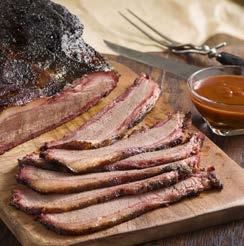
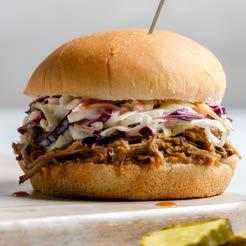

SMOKED BEEF BRISKET:
ARROW-CIRCLE-RIGHT Pair with a bold, hoppy India Pale Ale (IPA).
ARROW-CIRCLE-RIGHT Characteristics: Strong hop flavor, higher alcohol content, distinctive bitterness. Note: Avoid excessively bitter IPAs to prevent overpowering the dish. Ensure IPA is well-chilled but not ice-cold.
PULLED PORK:
ARROW-CIRCLE-RIGHT Pair with Amber Ales.
ARROW-CIRCLE-RIGHT Characteristics: Crisp, dry, flowery, light aroma.
Note: Enhances savory, tangy flavors of pulled pork.
BABY BACK RIBS:
ARROW-CIRCLE-RIGHT Pair with Brown Ales.
ARROW-CIRCLE-RIGHT Characteristics: Dark brown color, maltforward with notes of caramel, chocolate, nuts.
Note: Complements sweet barbecue sauce and savory meat.
BBQ CHICKEN
ARROW-CIRCLE-RIGHT Pair with a lighter Pilsner.
ARROW-CIRCLE-RIGHT Characteristics: Light body, lower alcohol content, unique hop flavor, slight sweetness.
Note: Complements the saltiness of BBQ chicken.
SMOKED CHICKEN WINGS
ARROW-CIRCLE-RIGHT Pair with a clean, crisp Lager.
ARROW-CIRCLE-RIGHT Characteristics: High carbonation, sharp, effervescent mouthfeel.
Note: Cuts through smoky flavors, classic pairing with wings.
SMOKED BOUDIN
ARROW-CIRCLE-RIGHT Pair with a Porter beer.
ARROW-CIRCLE-RIGHT Characteristics: Dark color, rich and complex flavors of chocolate, coffee, caramel.
Note: Complements the smoky, textured feel of smoked boudin.
GRILLED BURGERS
ARROW-CIRCLE-RIGHT Pair with a smooth Stout.
ARROW-CIRCLE-RIGHT Characteristics: Dark color, rich, creamy texture, flavors of roasted malt, coffee, chocolate, caramel.
Note: Smooth and velvety, balances well with burger flavors.


































Plates, bowls, party cups and more for your backyard BBQ!




Stock up on a variety of wet and dry foods from Purina®.

Brett/Robinson Vacation Rentals has the largest selection of beachfront and bayfront condominiums, hotels, and houses on the Alabama Gulf Coast. Fantastic amenities, spacious properties, white-sand beaches, and a week of incredible fun should be on your calendar for another visit this summer! Call our Local Vacation Specialists at 800.211.7892 or visit foodieslovethebeach.com to plan your next beach getaway!


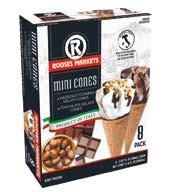
Crafted in the Vicenza province of Italy, our Authenic Italian Frozen Novelties are made exclusively for the Rouse Family & our customers.
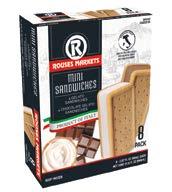

Delight your palate with Italian quality, taste and style (and no artificial sweeteners!). Rouses Italian Sparkling Mixers are designed to make every cocktail and mocktail taste delicious.
Available in these varieties: Ginger Beer, Tonic Water, Club Soda, Light Tonic Water




